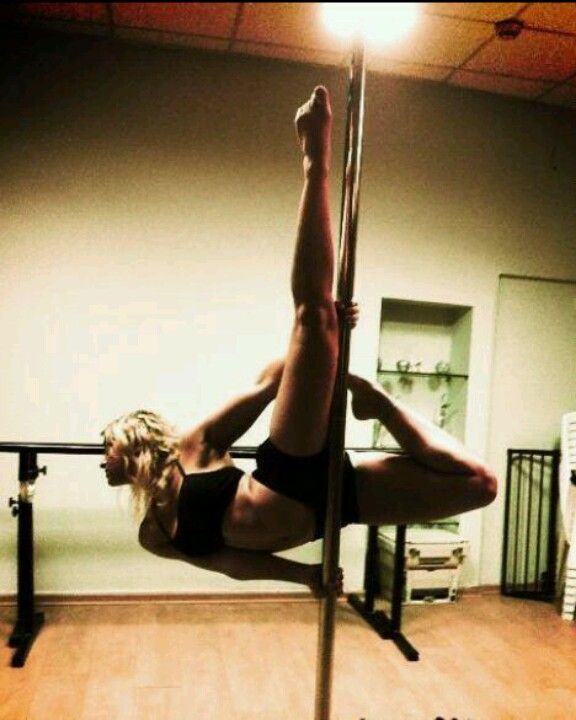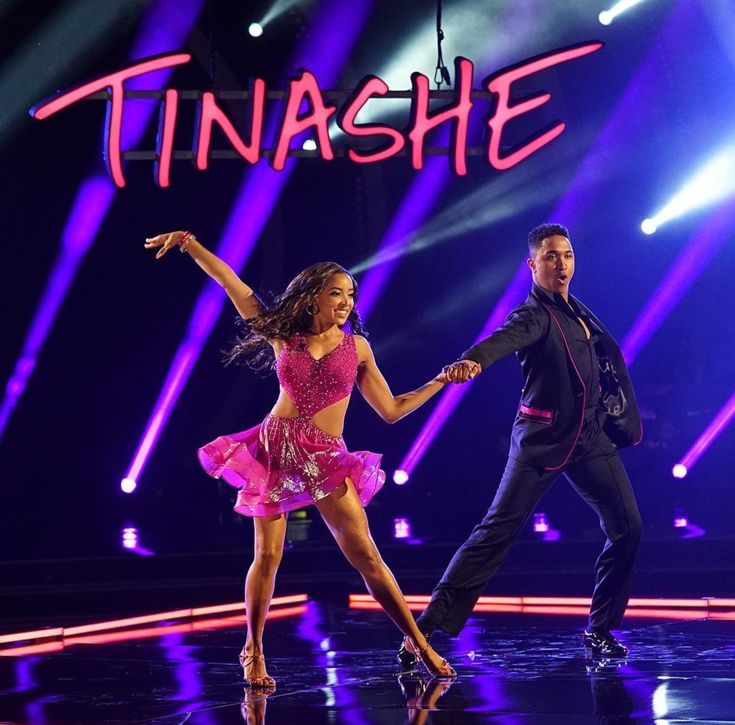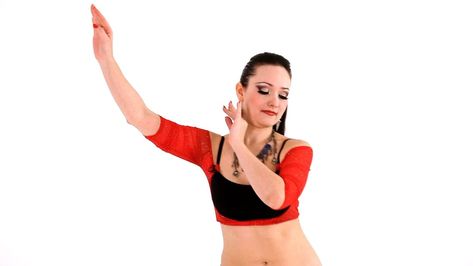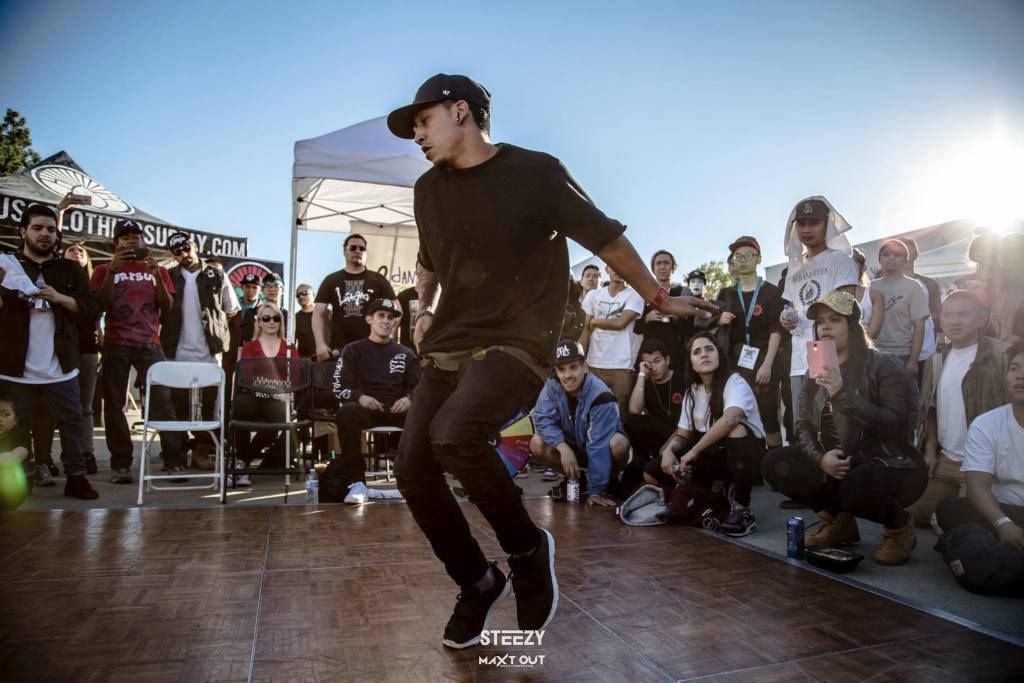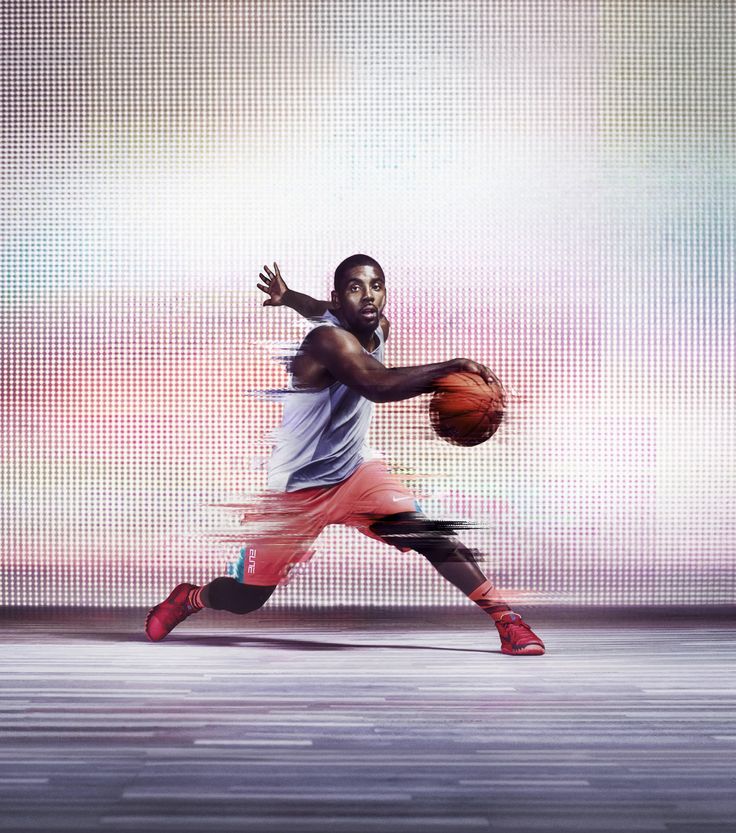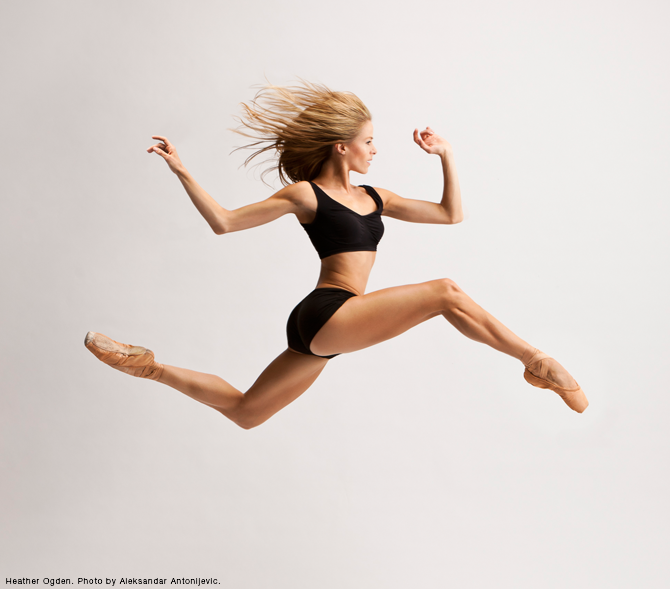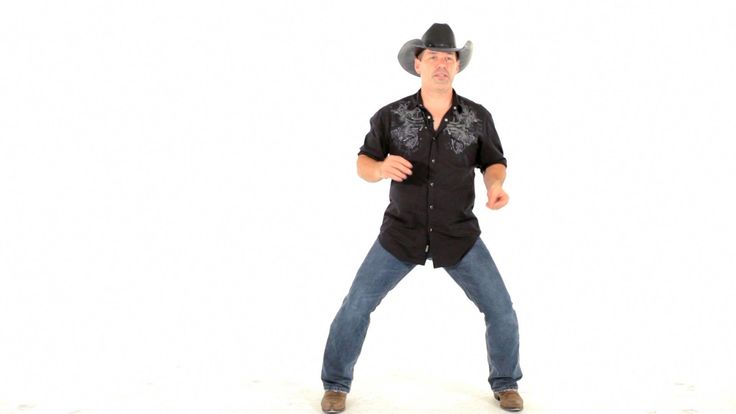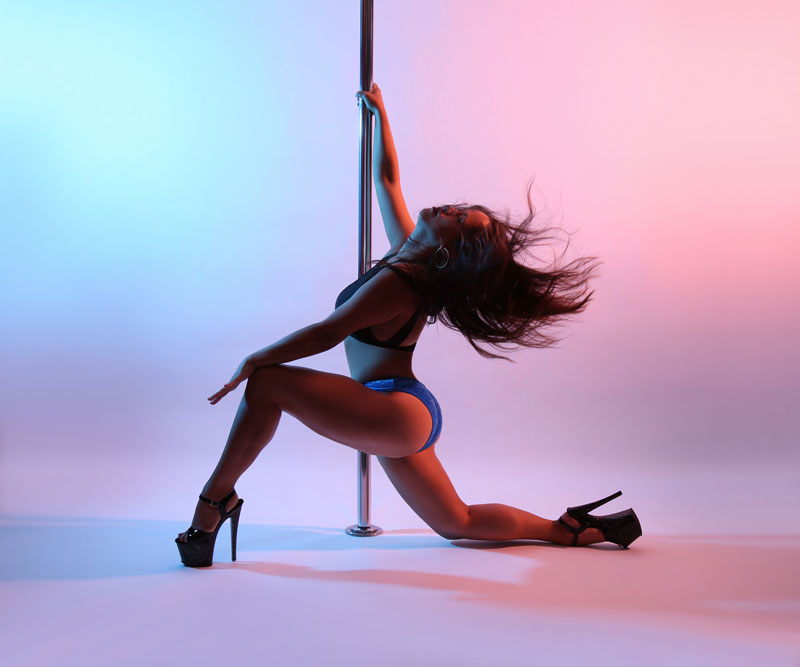How to start pole dancing at home
How To Start Pole Dancing At Home Using Home Pole Dance Pole
Table of Contents
Pole fitness at home has been trending and many women want to learn pole dancing at home. Here is all you need to know to learn using your home pole dance pole
There is huge popularity in pole dancing for exercise. Many women want to learn to start pole fitness at home. Because unfortunately there aren’t pole dancing classes in every town yet. You can take a ballet or Zumba class in most cities, but pole dancing is a different story. In order to run a pole dancing class, it takes quite a bit of an equipment setup. Moreover not all people have that kind of facility to open up classes. Not to mention, there aren’t a lot of pole dance teachers who know pole dancing for fitness.
You might have opted to learn how to teach yourself pole dancing at home; Since there are no classes in your area. Another common reason people learn at home is because pole classes can be super expensive. A private class can be as high as $75 an hour and regular classes in California are as high as $260 a month (for 4 classes in a group). You can take pole dance classes at home for under $20 a month!
Many FEAR publicly learning how to pole dance in front of other woman. Because they are worried “What if I look bad?” or “I think I am too out of shape?” and “Maybe I will get ready by learning at home and then go to class so I don’t look bad?” These are all common and normal concerns woman have.
In addition, if you don’t have a flexible time schedule or you have family duties that are higher priority, then pole fitness dancing at home seems like an easier and more comfortable and cheaper, and more convenient way to learn.
Especially, considering the todays changes in social distancing due to Covid-19 pandemic. Some people prefer to learn while staying at home. It is absolutely doable to learn pole dancing at home.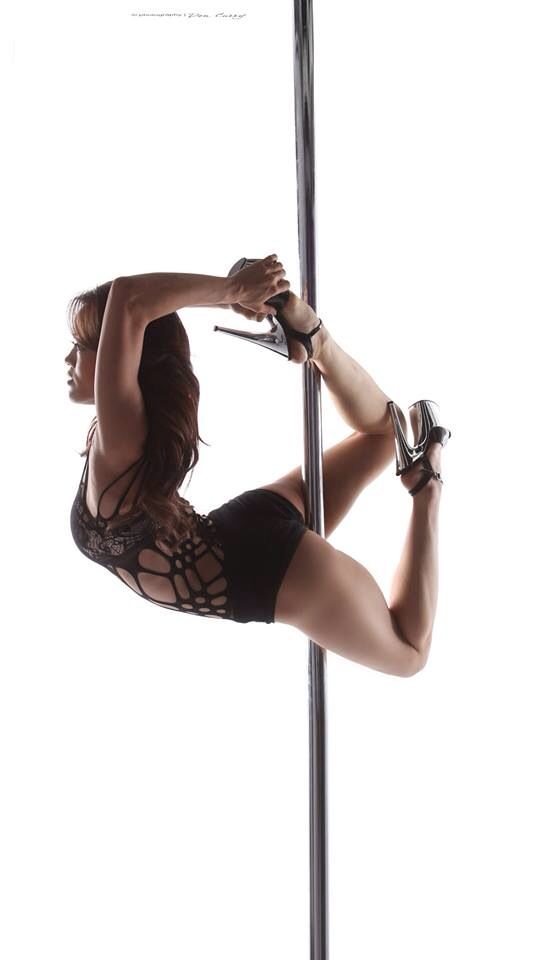 And it might even be more fun since you will eliminate the need of a trainer which gives you a flexible time to learn at anytime of the day. For example there are some that prefer to exercise and do pole fitness early in the morning and there might not be any pole studio open by then.
And it might even be more fun since you will eliminate the need of a trainer which gives you a flexible time to learn at anytime of the day. For example there are some that prefer to exercise and do pole fitness early in the morning and there might not be any pole studio open by then.
In order to start pole dancing there are many juicy detail you need to know. One great way is by downloading our free pole ebook. This ebook goes over everything in more detail than what this article covers, include different How to:
- Buy the right pole dancing pole for your unique situation at home.
- Use emotional and spiritual growth to get better at pole dancing as you get started learning to pole dance for fitness at home.
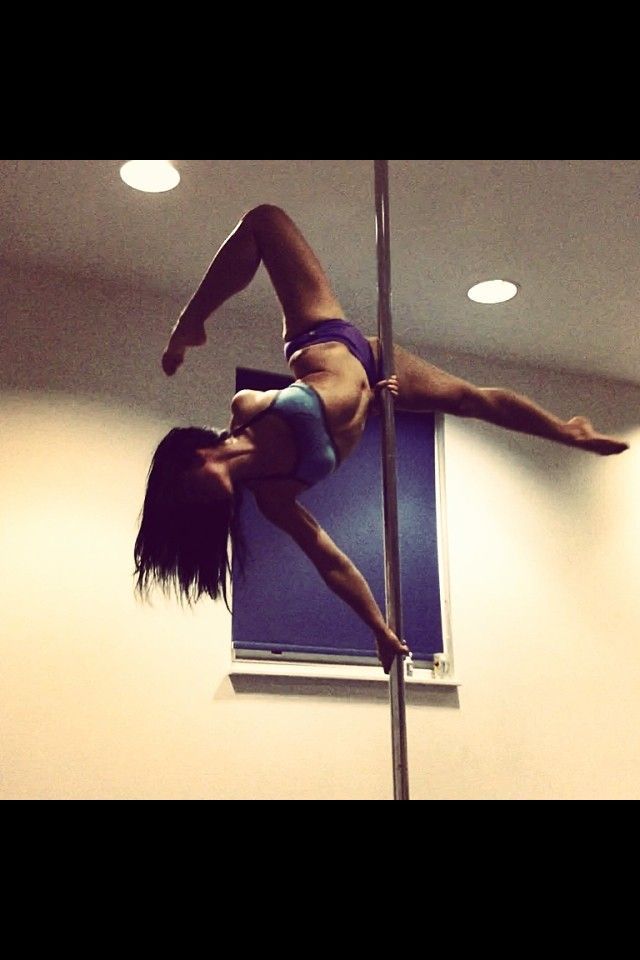
- Get started with grip aids for beginners including custom tips for your unique skin type, environment, and dance pole finish.
- Get started using grip gear to avoid excessive pole burns and bruising which are common for beginner pole dancers.
- Choose the BEST home pole dancing lessons for your fitness goals.
- Get started losing fat the quickest way possible while pole dancing at home.
- And much more!
This free ebook and pole guide called “Everything You Need To Know To Get Started Pole Dancing At Home“. It is FULL of more details and juicy tidbits than I can possibly cover here in this article.
But if you don’t want to download the free guide, here is a basic Step by Step summary of how to get started pole fitness dancing at home:
Step #1: Is Learning Pole Dancing At Home Is Right For Your Individual Situation?You can start pole dancing for fitness at home – it’s easier than you think. However, there are many benefits to attending class, even if you only go for a short time.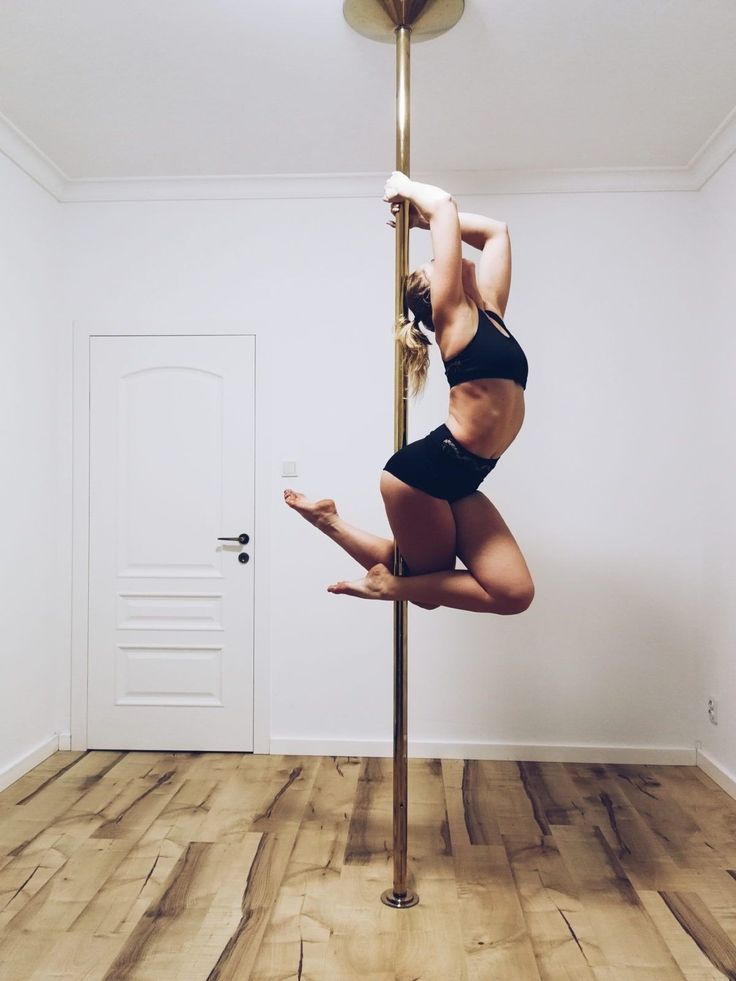
For example, there you learn to climb up on the pole, do pole spins, tricks, or do something like a pole sit and your teacher can spot you. He or she will be able to physically help you and show you what to do.
When you watch a teacher, you pick up a lot of extra tips about how to do things that aren’t always said in an online lesson (unless they offer detailed videos you can watch at home like the free online beginner pole lessons included in the pole kits.).
In addition, having a spotter is the safest way to learn. You can buy crash mats for home but having the teacher there will help you physically execute moves in a specific way to prevent a fall from happening to begin with. Here are some tips if you don’t have a spotter.
When you learn pole at home you don’t have that luxury and a fall off the pole can be dangerous so it is VITALLY IMPORTANT that you choose a teacher that offers proper posture, form, dance techniques, and other safety details in their online lessons as a means to prevent injury while practicing at home.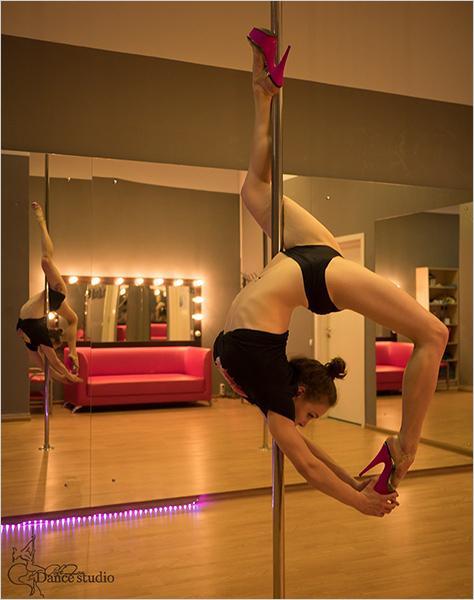
If you have considered the risks and are certain you want to begin your lessons at home then the next step is choosing the best online pole dancing lessons for you and buying a safe pole dancing pole for home.
Step #2: Start Pole Dancing At Home with the Right Pole Dance Class Teacher for YOU.Teachers all have different teaching styles and some use heels while others do not. You have decide what you expect to get out of your lessons and then find a teacher that has a similar style to what you want to learn. Go HERE for a good article about whether or not to use heels.
A great way to find a good teacher is to watch them dance. Also read their material on their website so that you can better understand how they go about teaching class.
How To Find The Right Teacher For Pole Dancing At Home?
Also, find out if they are certified. Certified pole dance teachers have a better understanding of how the muscles in the body work and this will always help you avoid injury.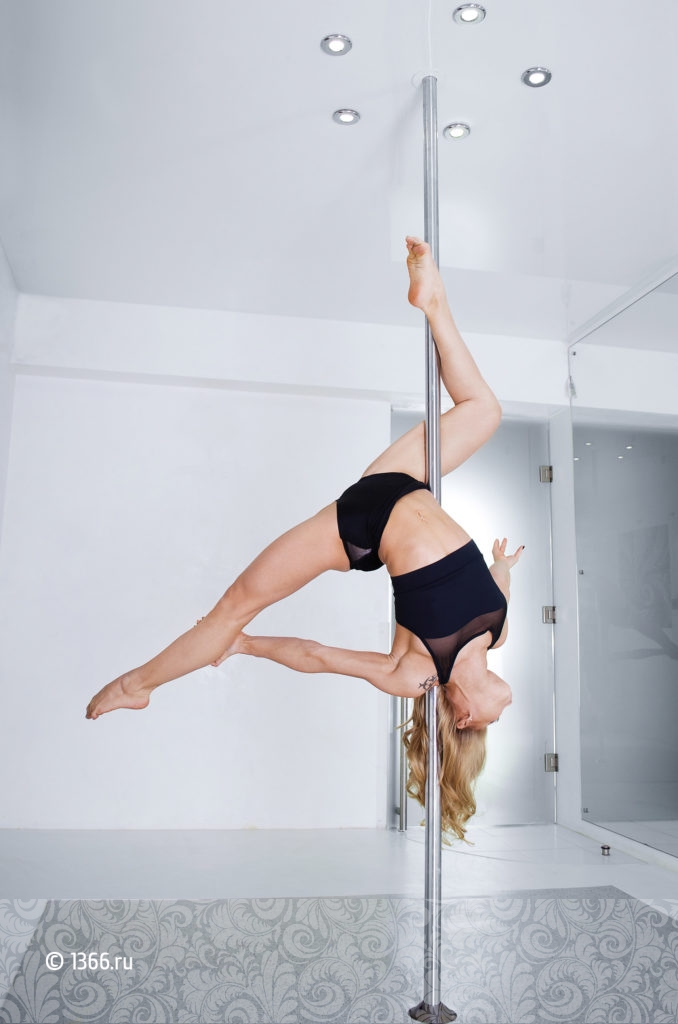
Additionally, Teachers with a background in ballet and other dance forms such as contemporary, jazz and hip-hop can allow them to create very fun routines and in many ways are better than certified pole dance teachers.
Why? Because anyone with a strong dance background, especially in ballet knows the critical value of proper posture, dance technique and stretching. Just because a person is certified in teaching pole dance doesn’t mean they were taught about good dance techniques or how to create good choreography – a VALUE you don’t want to miss!!
However, not all dance routines will be sexy either. Some are mainly for fitness reasons. Others are very sexy, are generally danced in heels and are a lot more exotic.
As a result, it is safer to dance in bare feet and not use heels, especially when dancing a home. Exercising in heels isn’t good for your back or posture. A good pole dance teacher will be all about good posture and balance muscle structure when you are learning./386cc95f4eeecfe.s.siteapi.org/img/9655f27bf84aab2d3b3aa6c19819f28a1b295633.jpg) Heels work against this concept.
Heels work against this concept.
Besides there are also pro polers out there who teach and if you aspire to go to elite competitions then choosing them as your teacher will be a good idea.
Step #3: How To Choose The BEST Pole Dancing Lessons Online To Start Pole Dancing At Home.The first step is to consider where you will take your pole dance classes online. Assuming you are learning from home, the best and easiest way to get started is to get a pole dancing kit that include online pole lessons and a dance pole for home.
You want to choose pole lessons that have detailed instruction regarding how to do moves with proper posture and dance technique so you can prevent injury from happening to you.
Take if from somebody who has already been through dance injuries and knows better.
There is a certain way to hold your shoulder position, your feet, your neck, knees, elbows, hips, and so on while you execute pole spins.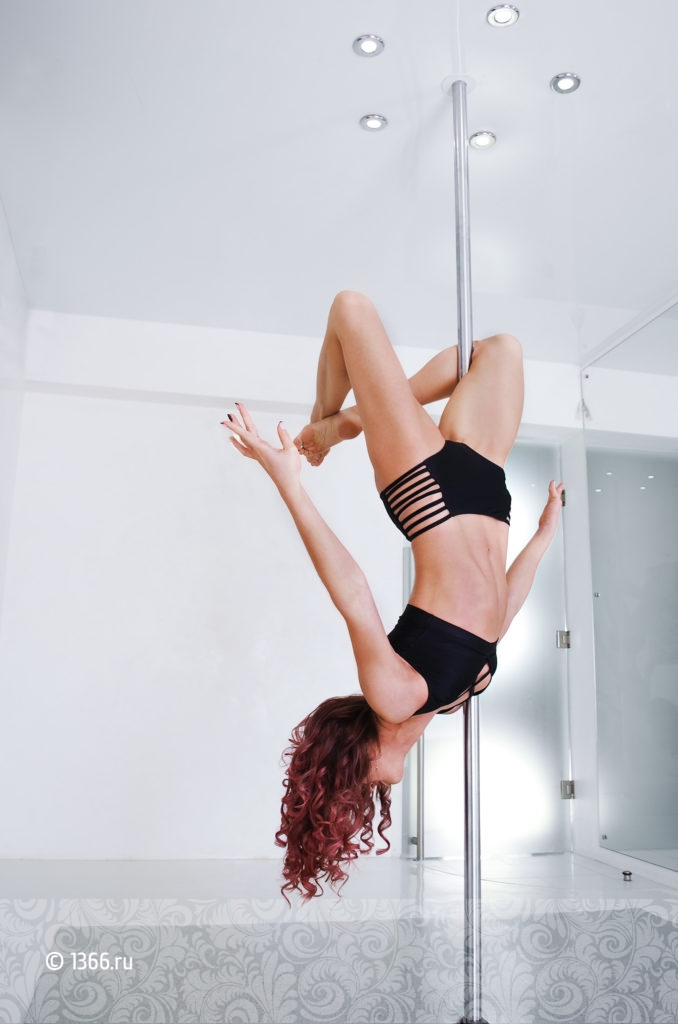 This posture is important for beginners to learn so they don’t get injured AND so they actually look good while they are dancing. This proper technique is EXTREMELY important if you plan to learn how to pole dance from home.
This posture is important for beginners to learn so they don’t get injured AND so they actually look good while they are dancing. This proper technique is EXTREMELY important if you plan to learn how to pole dance from home.
Stretching and warm up are the important parts of pole dancing. And it should not be dismissed.
Stretching and flexibility training is also critical in good online pole dancing lessons because it will get your muscles warmed up properly before your pole lessons begin. It has been proven that exercising with cold muscles leads to serious injuries. Not only that, when your body temperature is cold, it is a lot harder to grip the pole dancing pole which in turn can cause you to slip and fall – not what we want.
Everybody loves to skip the stretching and warm up section. Inevitably they feel like they “don’t have time to do it” and this is a huge mistake if you want to learn pole at home.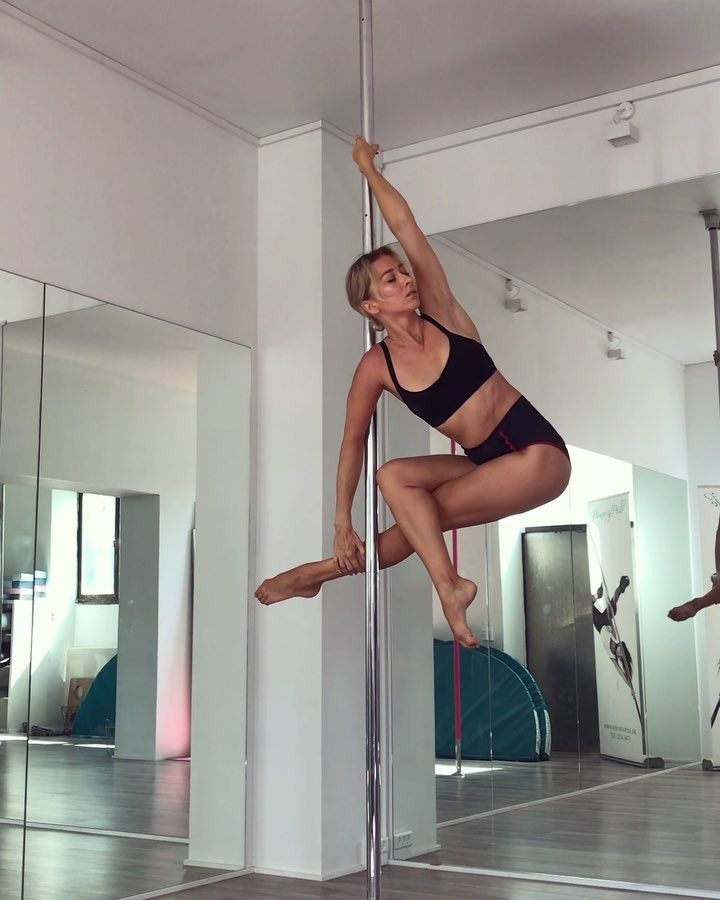
In addition, some pole moves require a certain level of flexibility to execute. If you don’t stretch, you won’t be able to do ALL the pole moves available to you.
It is important to know pole moves are mainly based on the poler’s body weight. which means unlike other sports such as power lifting, you are not dealing with extra weights. But this does mean there is no warm up needed. Stretching and warm up are mainly a way to secure your joints and muscles.
The best online pole dancing lessons will make these critical points known to you in advance, before you begin learning pole dance from home.
Aside from the critical posture and stretching points made above, always be sure to learn every bit of information you can about a move before you attempt to do the move.
Moreover, good online pole dance classes will strive to help you understand where to place your hands and legs and at the proper angle on the pole. You will also need to know points of contact on your skin for grip.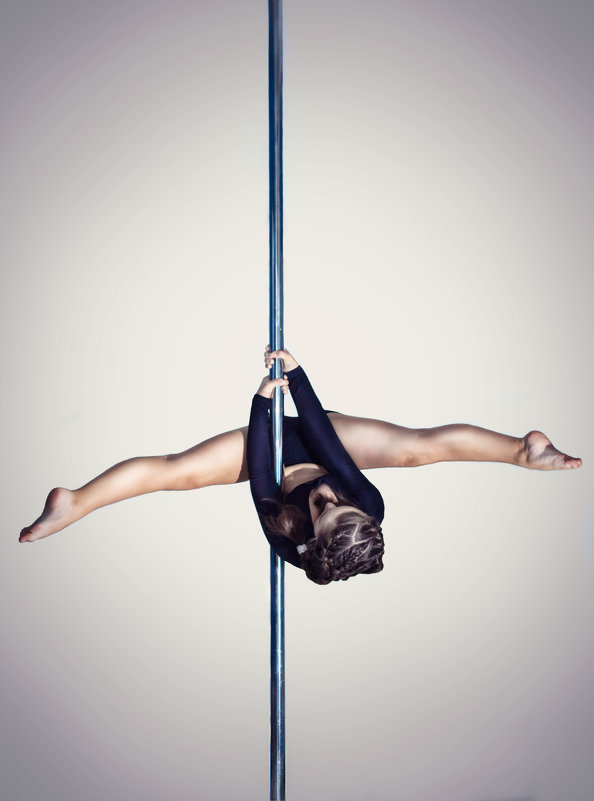
Although the teacher and instructor will help you learn the move as close to the ground as possible. However, almost all moves and tricks that are done really high up on the pole can be learned from the floor first. Always learn from the floor first. You would be amazed that how many online teachers and trainers don’t practice this.
You should also learn how to exit the pole spin, trick, or move in the beginning of the lesson is possible.
All the pole video lessons in our shop are taught with these safety, posture, and dance techniques in mind.
Check out are good recommendation for getting started with online lessons:
As an aspiring competitor who wishes to compete in top athletic competitions, I recommend to try Open Academy’s Complete Pole Dancing Course is top notch with lessons from world champions you can do in your own home.
If you are an everyday woman looking to get started using pole dancing for fitness at home for fun and exercise try the Home Pole Dancing Lessons For Everyday Woman.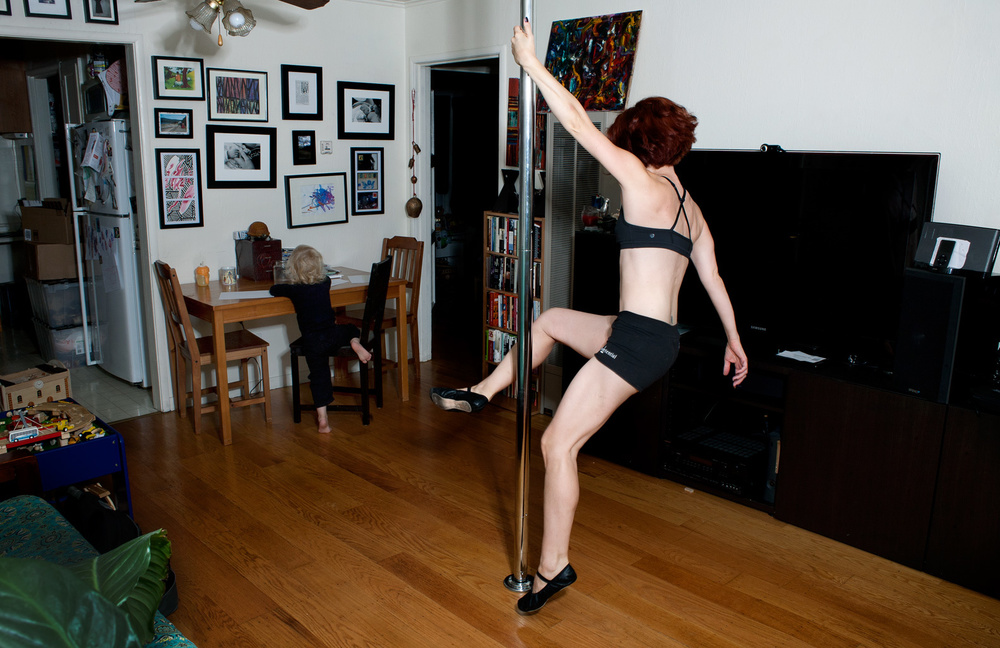
And on the event you don’t have a pole yet, you can get free online pole fitness lessons for beginners in a pole kit here >>
Step #4: Buying a Safe Dance Pole and Other Pole Fitness Equipment Needed To Start Pole Dancing At Home.Buying The Right Dance Pole
There are a lot of different dance poles available to purchase on the market.
Some are not made for exercise and are not safe to invert on. They are poles made to dance around, not on. If you are going to learn pole dancing at home, you need to pick a very safe pole so you don’t hurt yourself.
It simply isn’t worth putting your health at risk over saving a few bucks to get a cheaper pole. Look for quality and don’t skimp because of the price.
As seen in the picture to the left, some poles (in this case it was the Carmen Electra Professional Pole) have been made with thin metal which can bend easily and are not recommended for fitness purposes.
Use A Safe Pole For Pole Dancing At Home
A good sturdy pole will be made of thick heavy duty parts that are ALL METAL. One sign of a cheap pole is the use of plastic parts. Why? Simply put, plastic breaks.
To the left you will see a picture of a plastic pole part. It’s the adjuster bar and the wrench provided in the package actually ripped away the plastic threads when I tried to tighten the pole to the roof! Obviously, plastic is a wrong choice of material to use in the pole.
You can buy a good, sturdy, and affordable dance pole for home for only $20-$40 more. Regardless of the pole use; whether if it is for fitness or dancing purpose; the material use in the pole s crucial for the safety. In conclusion, plastic should not be in any part of the pole as it is not a durable product.
I also have a great video to watch regarding what to look for in a good, sturdy removable and portable pole dancing pole for your home:
GO HERE >> To get a good dance pole with all the good qualities shown in the video above.
Watching many dance pole reviews is a great way to pick a pole for your home as well.
The best choice is a dance pole that is both static and spinning. This will come in handy as you advance and spinning poles for pole dancing make most beginner pole moves easier to do as well.
Additionally, there are certain pole moves that is rather difficult to learn on a spinning pole and some moves are easier on a spinning pole. As a result having a pole with dual function can help learning process more efficient and fun.
A good quality pole will support you when inverting (going upside down) and swinging or spinning on it.
I put together a list of pole dancing poles that I consider cheap due to the use of thin metal and/or plastic parts that ARE NOT suitable to learn pole dancing at home for fitness reasons for your own research:
- Spencer’s Stripper Pole
- My Sexy Little Pole
- Pro Fit Professional Pole
- Carmen Electra Professional Pole Kit.
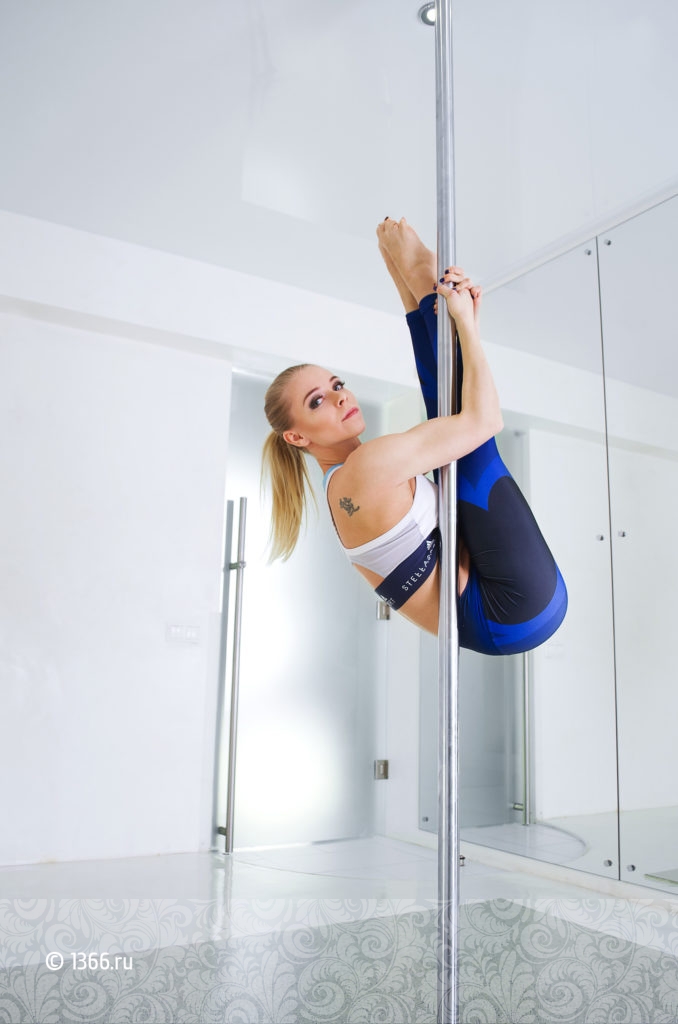
- The Pro Quality 45mm Spinning Pole Dancing Pole
- Lupit Dance Poles
- The X Pole X Pert
- The Lil Mynx Rotator.
Reasons I think they are sturdy is due to personal use or experience in my classes, thick solid metal parts, firm and sturdy attachments, quality warranty and brand.
Depending on the pole you choose, you will have other things to consider. Such as; different finish types, different pole diameters and of course poles for different ceiling heights and angles. Click the “How To Choose” button below for more details about how to choose the right dance pole for your home space.
CRASH MATSMats are a nice addition to help improve safety when you start pole dancing at home.
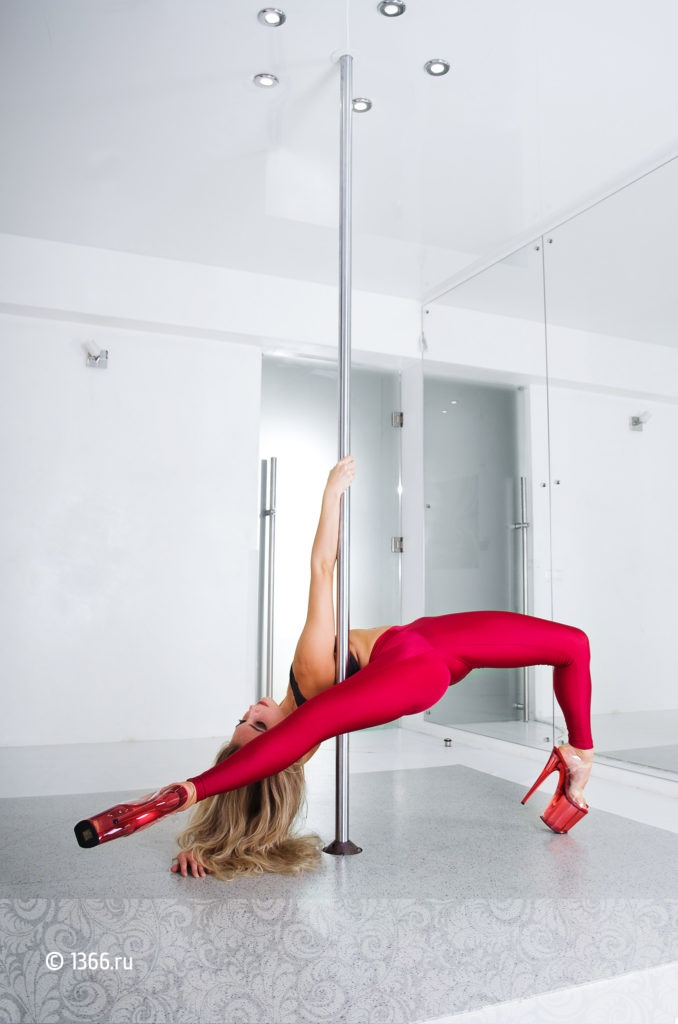
The main reason Crash mats are useful is because you don’t always have someone there to spot you. When you are learning alone at home, these mats can help protect you in so many ways and are well worth the investment.
It is commonly known that crash mats help by creating a safety during the pole moves. However, the safety purpose is not the only reason to own a crash mat. Moreover, crash mats known to create a sense of mental security. As a result, the beginner pole dancer can learn new tricks without being concern about falling down and mainly focus on learning the moves.
You don’t need a crash mat right away if you plan to stay grounded, but as soon as you decide you want to climb the pole, invert, do pole spins, or learn more intermediate spins or move, getting a mat can help you avoid unnecessary bruising and other injuries.
Crash mats are not a substitute for a spotter in fact, having them and a spotter is best. We all love soft landings!
You can shop for good pole dancing crash mats of various sizes here >>
Studios are required to be at least 4” thick so I recommend you use that thickness at home as well.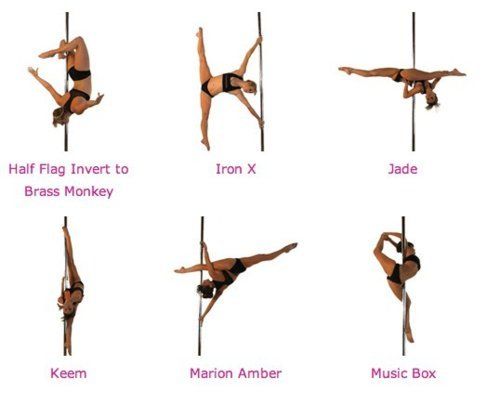 You can buy thinner crash mats, but they are not as safe in my opinion.
You can buy thinner crash mats, but they are not as safe in my opinion.
Everyone has a unique space in their home. And it can be ultra fun to set up a dance space at home. There are few points to consider before setting up your dance pole space.
This is space for your fitness, fun, and play! A space to enjoy your pole dance routines, feel the music and let your soul soar all while. And above all this is a space for getting the fit and lean body of a pole dancer.
Step #6: How To Get The Right Grip Aid and Gear For Pole Dancing At HomeYour first challenge would be getting a good grip on the dance pole. Especially once everything is set up. Also you need to know this is normal so don’t panic. Grip always improves with time and everybody goes through it.
It is best to use a grip aid when you first begin to learn your pole moves. It takes time for your muscles to improve.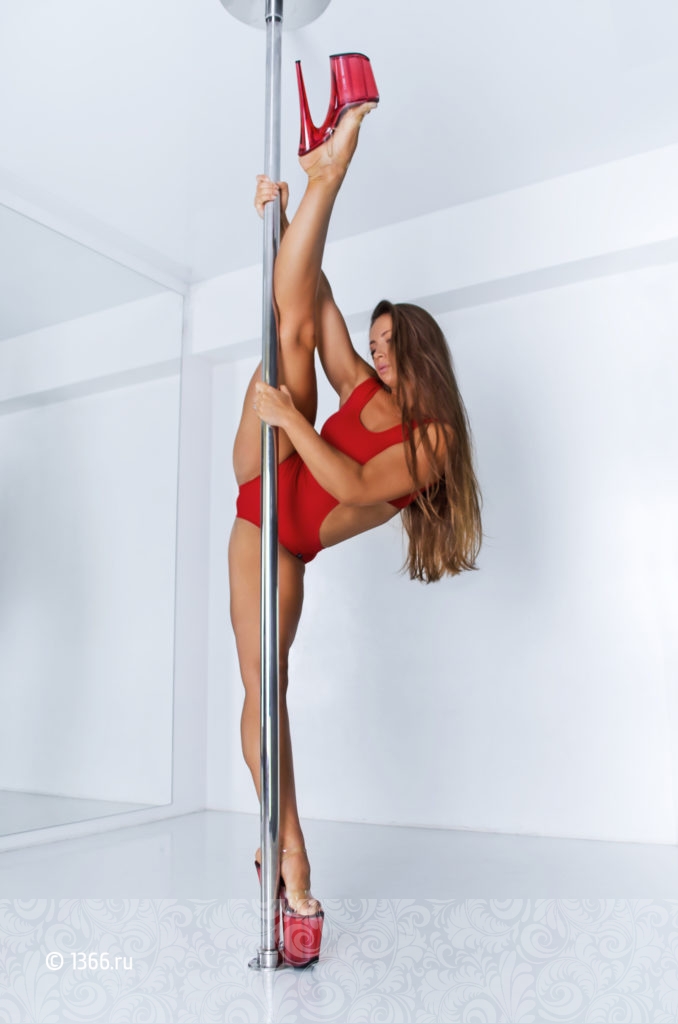 As a result you may not be able to hold your entire body weight up right away.
As a result you may not be able to hold your entire body weight up right away.
Grips aids will help you learn and in later stages, help you safely do more advanced moves.
Each grip aid is different and you will choose a different product depending on your skin type and climate. Here is a video that will help you choose a grip aid.
Step #7: How To Do Pole Dancing At Home On Your Pole Step By StepWarm Up
Warming up is the safety measure and should not be dismissed. Always ensure you are warmed up before using the pole.
It’s always important to warm up the muscles before doing any pole dancing. Cold muscles can be easily injured. You can two 3 reps of squats as a warm up, a light jog in your living room, or do an active abdominal routine to get your body warmed up.
Warm up routines can very person by person. However you need to ensure to warm up all the main joints and muscles to avoid injury.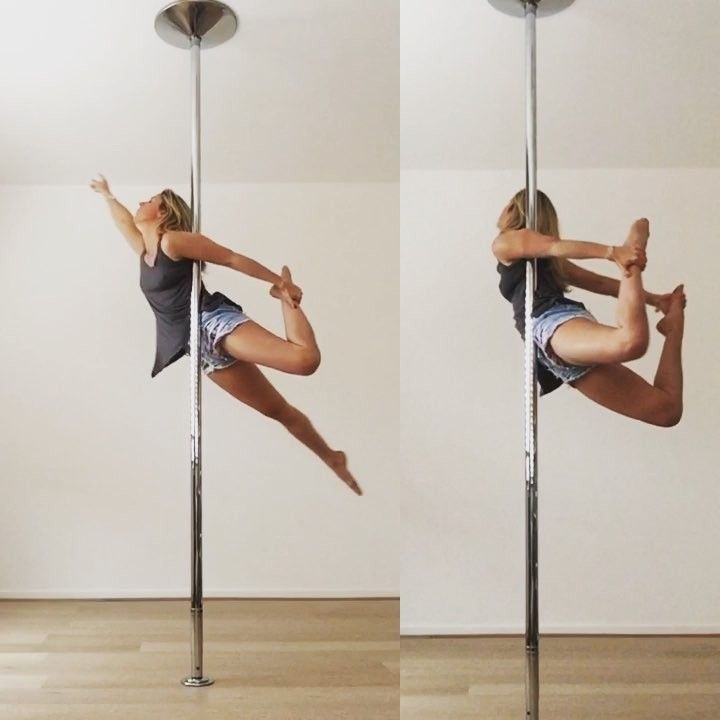 Additionally, it is best to focus more on parts that are going to be used more often.
Additionally, it is best to focus more on parts that are going to be used more often.
Pole Dance Moves
There are plenty of pole moves and tricks available. And every now and then a new pole move will get introduced to the list. However, the fundamental pole moves will mostly remains the same. As a result learning the fundamental moves are rather important, in order to develop pole routines.
Secondly, it is always better to list down the various pole moves. This will help you to develop various pole dancing routines. Pick 2 or 3 of your favorites and focus on getting the pole moves accomplished with ease and proper form. Here is a video where you can learn how to do the Scissor Plank Pole Sit Move:
Pole Dance Routines
There are several basic pole moves and these moves are rather easier for beginners.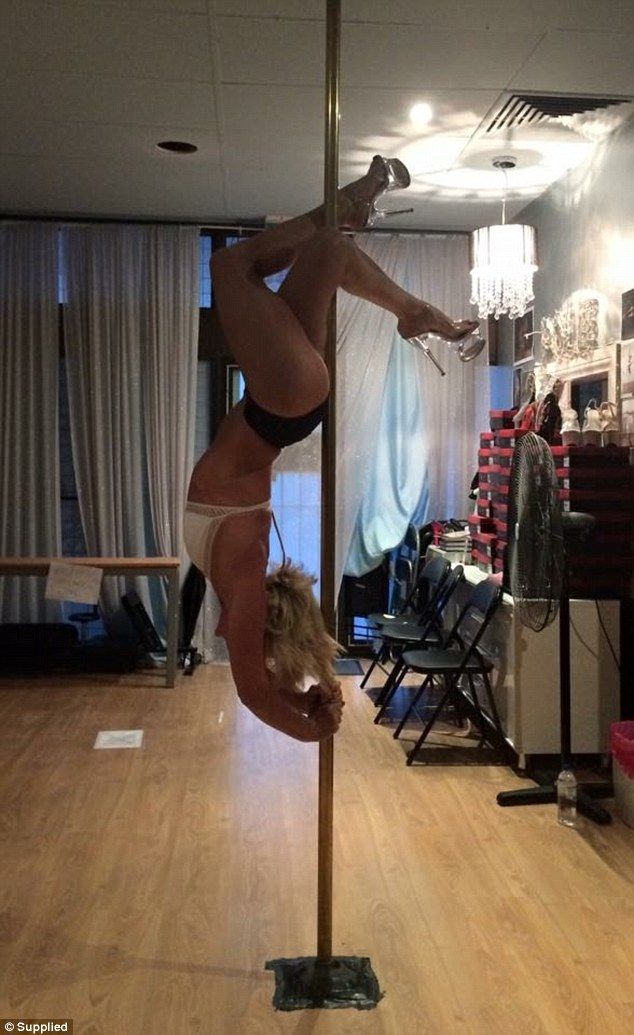 Here I’ll list some of the moves for you to refer to; Fireman, Knee Spin, Back Hook Spin, Front Hook Spin and the Martini pole move. In order to create a pole routine you need to learn at least 2 to 3 moves. Once you understand those pole moves, then you can try to combine them into a fun pole dancing routine. Also music can help making the routines more fun. Make sure to find a song that you like and practice your routines over it.
Here I’ll list some of the moves for you to refer to; Fireman, Knee Spin, Back Hook Spin, Front Hook Spin and the Martini pole move. In order to create a pole routine you need to learn at least 2 to 3 moves. Once you understand those pole moves, then you can try to combine them into a fun pole dancing routine. Also music can help making the routines more fun. Make sure to find a song that you like and practice your routines over it.
But don’t worry If you aren’t a great choreographer. You can learn this pole dancing routine for beginner in this video step by step at home:
Stretch
Never skip on stretching! It’s important. And that is because the more flexible you are the better you will get at pole dancing because many of the advanced pole tricks take better flexibility to execute.
Here is a nice and simple Stretch video (P.S. you could use it for a light warm up too if you wanted):
Cool Down
It is important to cool down after every session. And this practise will help you to regulate your blood flow. As a result your body is reversed back to pre exercising mood. Please ensure to stay hydrated through out this whole process.
And this practise will help you to regulate your blood flow. As a result your body is reversed back to pre exercising mood. Please ensure to stay hydrated through out this whole process.
The very best way to get the most is by joining other woman like you on Facebook. Pole dancing at home can be a lonely experience and leave you in a rut as far as knowing how to continue on.
Group activities are more encouraging. And help people to share thoughts and ideas. As a result, people have more incentives to dance and can boost each other’s mood.
Supportive community is an important aspect of pole dancing. And It will help learning process much faster and fun. Moreover, the pole dancing community is full of loving and supportive woman who will gladly help you along the way and help you to keep going.
Try several different teachers and play with different dance styles.![]() Enjoy the bonding experience with other people you meet online!
Enjoy the bonding experience with other people you meet online!
This is an important piece to help you keep going in your pole journey. Enjoy!!
Save
Save
Save
Save
Save
Save
Save
Save
Save
Learn Pole Dancing at Home - A Complete Guide
This article may contain affiliate links. This means that at no extra cost to you, I may earn a commission if you use one of these links to make a purchase. Read the full disclosure.
Contents
- Is Learning Pole Dancing at Home right for you?
- Other Ways To Learn Pole Dancing
- Choose a Dance Pole Suitable for Home Use
- Always Put Safety First
- Assess Your Space
- Find the Right Clothes
- Online Pole Fitness Lessons
- Open Dance Academy Online Pole Dancing Lessons
- Danna’s Online Pole Dancing Course
- Studio Veena Online Pole Dancing Lessons
- X Pole TV
- Pole Fitness DVDs
- The Art Of Pole by Jamilla Deville
- Felix Cane Pole Dance Mastery
- The Pole Fitness Series
- Get Involved With the Community
- Further Reading
- The Ultimate Pole Tricks Handbook
 Or, you may lack the confidence to attend lessons and would prefer to learn in a more private environment.
Or, you may lack the confidence to attend lessons and would prefer to learn in a more private environment.- Is Learning Pole Dancing at Home right for you?
Learning something at home is the most convenient way to learn at your own pace. If you have a busy lifestyle, job, or family then it can be hard to find the time to commit to a series of pole dancing classes. By choosing to learn at home, you can do so in your own time.
You can take as much time as you want to practice and review moves. If you’re in a gym or a public class, you may not have enough time to spend practising a particular move as the instructor may have a lesson plan to stick to. By learning at home, you control what you do during a practice session.
Learning pole dancing at home is less expensive than classes consider how much you learn for the price if you choose to purchase DVDs or online lessons.
Pole fitness lessons may cost $20-$30 per time, and you should attend once a week to really feel the benefit.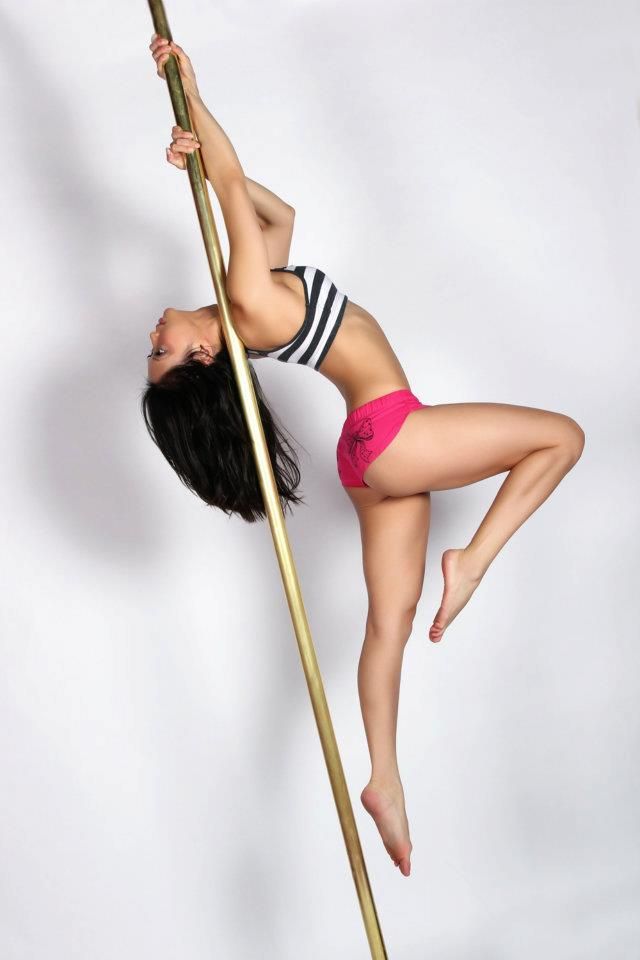 The instructor will set the pace of the lessons and choose which tricks to teach you and in what order. In The Art Of Pole DVD, for example, you learn well over 50 moves for around $120, whereas a $120 spent at a pole class would teach you fewer moves.
The instructor will set the pace of the lessons and choose which tricks to teach you and in what order. In The Art Of Pole DVD, for example, you learn well over 50 moves for around $120, whereas a $120 spent at a pole class would teach you fewer moves.
It can be extremely good value to purchase online lessons too.
Here is our complete guide on how to learn pole dancing at home. If you find this guide useful, don’t forget to share it with your friends on social media!
Is Learning Pole Dancing at Home right for you?
First of all, you need to decide whether learning pole dancing at home is right for you. Consider your previous fitness experience, if you’re completely new to this form of exercise then you may benefit from attending a class, even if it’s just to learn the basics first.
In just a few lessons you can learn the basics with a qualified instructor by your side. It’s hugely beneficial if you can get a grasp of the basics, such as:
- Climbing the pole
- Different types of grip
- Sitting on the pole
- Spinning to the floor
- Basic invert techniques
Once you learn these techniques, then learning pole dancing at home is a great idea for you to save money on regular pole dance lessons.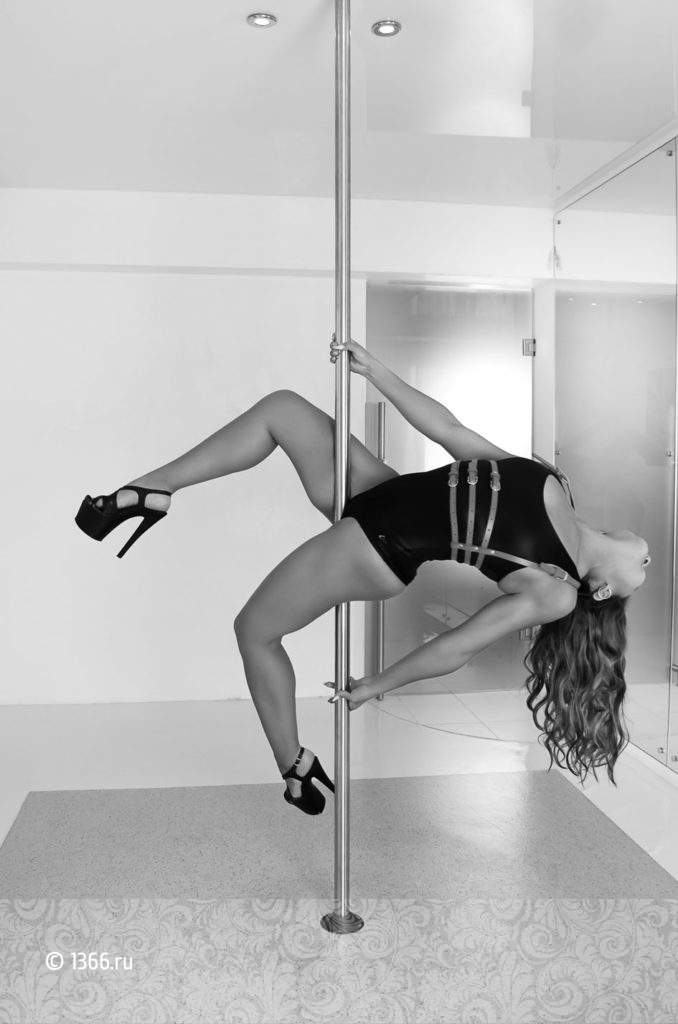 You don’t have to completely nail all of these tricks, but you should have a good understanding of how to safely perform these techniques.
You don’t have to completely nail all of these tricks, but you should have a good understanding of how to safely perform these techniques.
Also, what about your living situation? Is your home suitable for you to install a portable dance pole easily?
You’ll need to make sure that you have enough floor and ceiling space to get the most from your workouts and to adequately performs certain tricks and spins that need more space than others.
Other Ways To Learn Pole Dancing
- Attending a pole dancing class
- Arranging a 1-2-1 private pole dancing lesson
- Attending a pole dancing party
- Being taught by a pole dancing friend
Find out more about these ways of learning pole dancing here.
Choose a Dance Pole Suitable for Home Use
Once you’ve decided that learning pole dancing from home is right for you, then next thing you’ll need is a pole to dance one! We’ve written multiple guides on this topic so to avoid repeating ourselves…
If you don’t yet know about portable dance poles, X Poles, and Freestanding dance poles then you can learn all you need to know from these articles… (they all open in a new tab)
- Best Dance Poles for Sale 2019
- Portable Dance Pole Buyer’s Guide
- All You Need to Know About Freestanding Dance Poles
- Chrome, Brass, Titanium Gold, Stainless Steel, Silicone or Powder-Coated: Which Pole Finish is Right for you?
- X Pole XPERT “The Ultimate Dance Pole” Review
- X Pole Sport Review
If you don’t have time to read all of that information right now, then what’s most important to know is that you choose a professional dance pole manufacturer such as X Pole or Lupit Pole and that you buy directly from them or from an authorized re-seller, such as Amazon.
Be very wary of fake X Poles being sold on eBay and Craigslist.
You’ll probably also want to get these somewhat optional, but hugely popular accessories for pole dancers. Click on the links to learn more about these items (they all open in a new tab).
Always Put Safety First
Safety is the most important thing when you’re trying a new form of exercise. Pole dancing is no exception.
You should make sure that you have plenty of space around your pole, to ensure that you won’t knock or kick anything during your workout session.
If you stand between the pole and the nearest wall, you should be able to stretch your arms out as wide as they go without touching the pole or the wall.
During a pole fitness session, you can literally be swinging around the pole! So, you need to be confident that you can do so safely at home!
Assess Your Space
Many pole dancers manage to use a dance pole at home without the ideal amount of space, and they do so successfully.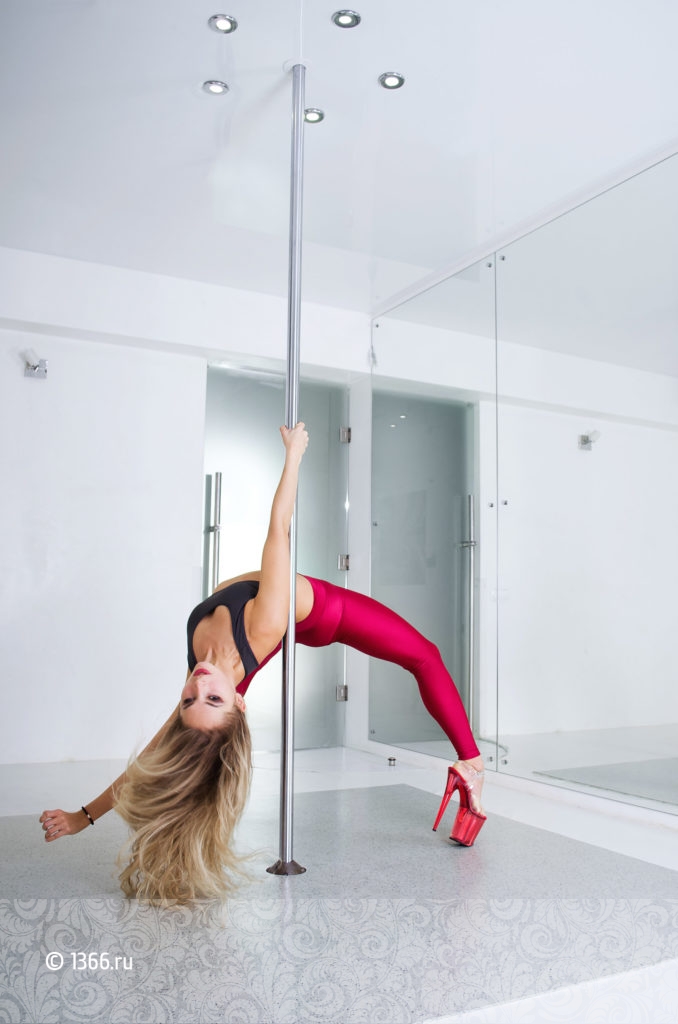 However, some moves and combos cannot be performed in smaller spaces, although it is possible to adapt your routines according to the space around you. As a beginner, it is better to be able to move as freely as possible so try your best to make space around you.
However, some moves and combos cannot be performed in smaller spaces, although it is possible to adapt your routines according to the space around you. As a beginner, it is better to be able to move as freely as possible so try your best to make space around you.
This could mean pushing your furniture up against the wall or moving any delicate objects out of the way.
If possible, always have a spotter with you when you attempt moves for the first time
Always use a crash mat designed for pole dancing as they can protect you from some nasty falls and injuries. As you’ll be learning pole dancing at home, and not in a studio, it’s important that you take these extra precautions as there will be no one to blame but yourself if the unthinkable happens. Read our safety guide for pole dancing at home (opens in a new tab).
Find the Right Clothes
If you’re learning to pole dance at home, there’s no one to impress apart from yourself! There’s no need to spend hundreds of dollars on new pole dancing clothes right away.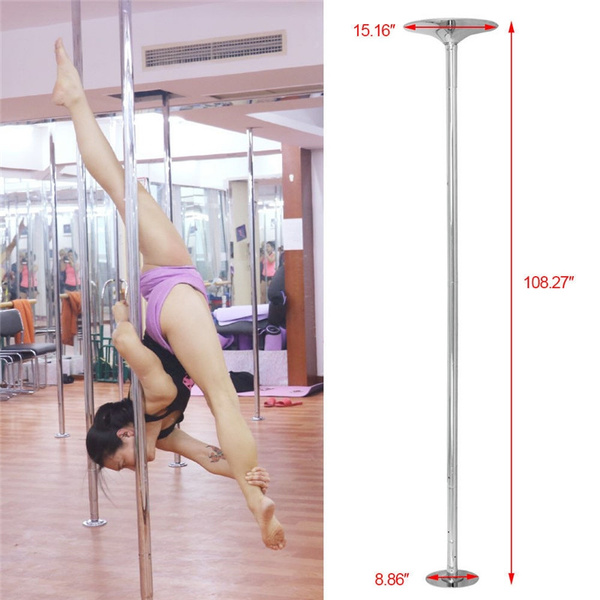
You will need shorts, a tank top and a sports bra at least. Shoes are optional, many people pole dance barefoot while others wear huge stripper heels every time! Yoga shoes are also perfect for pole dancing, especially for beginners.
As you progress with your pole dancing, you’ll likely want to buy yourself new clothes, fancy shorts, legwarmers, and beautiful new outfits! But, as a brand new beginner, you can stick to shorts and a tank top – but the choice is yours!
Online Pole Fitness Lessons
Believe it or not, one of the best ways to learn pole dancing at home is with Online Pole Fitness Lessons.
Learning pole dancing at home using online lessons is perfect if you don’t have time to commit to a full course of pole dancing classes, or if there are no classes available in your local area.
Obviously, learning pole dancing online has a lack of real-time instruction and advice. You may not realize that your technique may be completely wrong, but there’s no one there to correct you.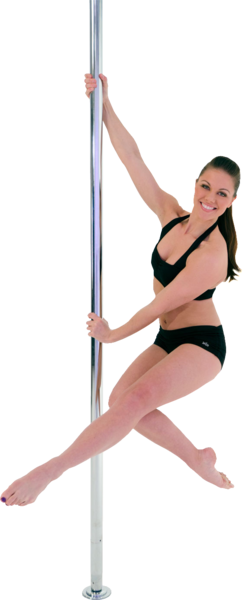 Repeatedly performing a move incorrectly can also lead to injuries and muscle strain over time, so try to seek advice from a professional instructor where ever possible and don’t attempt anything that doesn’t feel right.
Repeatedly performing a move incorrectly can also lead to injuries and muscle strain over time, so try to seek advice from a professional instructor where ever possible and don’t attempt anything that doesn’t feel right.
There are some very high-quality online pole dancing lessons available right now, where the instructors go over each move in great detail, talk through technique and points of contact, explain common problems with different tricks and provide motivation through their instructions.
Here are some of the range of online pole fitness lessons available at the moment:
Open Dance Academy Online Pole Dancing Lessons
Open Dance Academy has over 450 online lessons, by some world famous pole dancing champions, such as Evgeny Greshilov, Yvonne Smink, Jamilla Deville, Maddie Sparkle and more!
They currently offer:
- Access to more than 450 high-quality video lessons with the lifetime access option ($350)
- Excellent value for money when compared to the price of local pole dancing classes
- Suitable for beginner, intermediate, advanced & expert pole dancers
- Their website works on mobiles, tablets, and laptops
- A stress-free training environment that you can do in your own time.
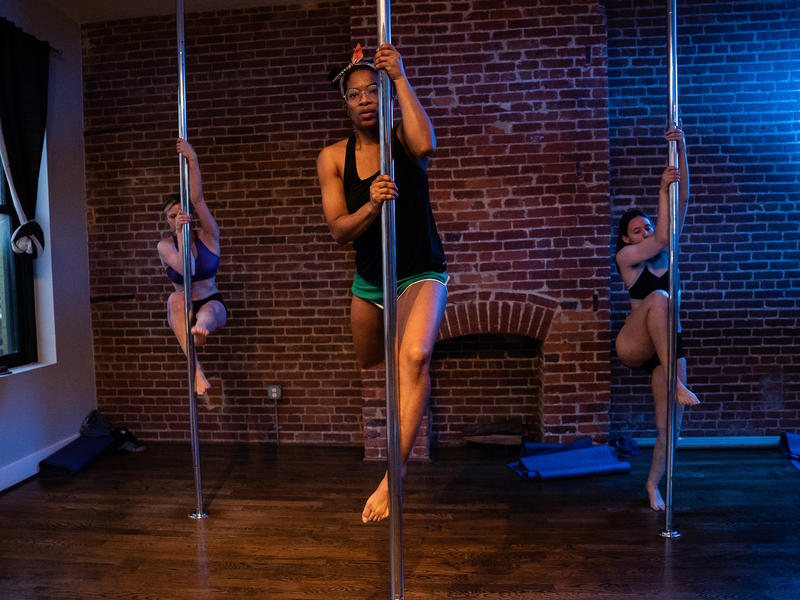 No driving, parking or stress.
No driving, parking or stress.
***GET 10% OFF OPEN DANCE ACADEMY***
Use the code polefitfreedom to get 10% off Pole Dancing Lessons with Open Dance Academy. This is an exclusive offer for readers of this blog!
FIND OUT MORE HERE
Danna’s Online Pole Dancing Course
This course has over 130 online lessons, it’s currently on sale at $47 and that includes lifetime access to all lessons, so check it out it now before the price goes up again!
Find out more here
Studio Veena Online Pole Dancing Lessons
Studio Veena is one of the original and best online pole dancing lesson providers. Not only are the top-notch and detailed lessons available for members, there’s a huge and active community too. You can join the community without paying, use the link below for a 3-day free trial and see what Studio Veena has to offer.
Sign-up for a free trial here
X Pole TV
X Pole themselves have launched their own online pole fitness lessons, including The Art Of Pole by Jamilla Deville! (Keep reading to learn more about The Art of Pole DVD Collection – a personal favorite!)
Find out more about X Pole TV here
Pole Fitness DVDs
Using DVDs to Learning Pole Dancing is another great way to learn pole dancing at home.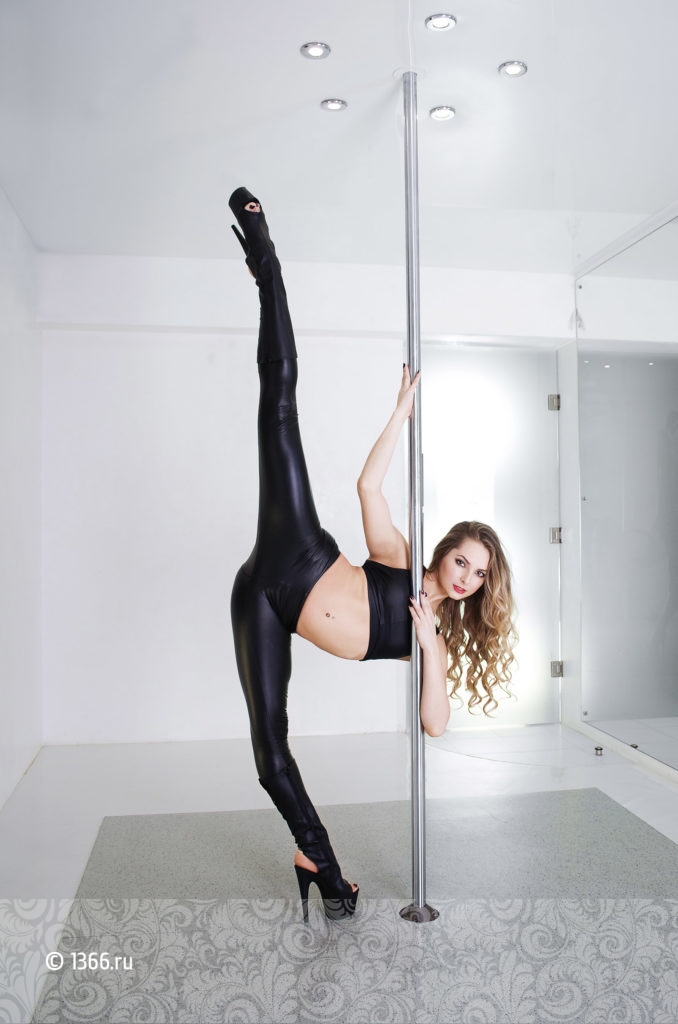 As with online pole dancing lessons, you should follow safety precautions, always use a spotter and a crash mat, and listen to the instructions carefully. You can pause and re-watch if necessary. Don’t take any unnecessary risks!
As with online pole dancing lessons, you should follow safety precautions, always use a spotter and a crash mat, and listen to the instructions carefully. You can pause and re-watch if necessary. Don’t take any unnecessary risks!
The Pole Fitness DVDs currently on sale can teach you pole dancing to a very high standard. Here are a few of our favourites:
The Art Of Pole by Jamilla Deville
This was the first Pole Dancing DVD I ever used, and it’s absolutely brilliant – I still refer to it very often. This DVD set contains five DVDs, each one increasing in difficulty. There is even a routine at the end of each DVD featuring all of the moves covered, which is a really nice touch.
These really are excellent instructional videos by Jamilla Deville, and there are some warm-up and cooldown routines too. This even includes routines performed beautifully by Jamilla wearing some beautiful costumes for inspiration.
Get your copy here on Amazon
Felix Cane Pole Dance Mastery
Now, this is the DVD for when it’s time to really level-up your pole game! Felix Cane’s name is synonymous with moves such as the ‘Spatchcock’ and advanced flexibility training.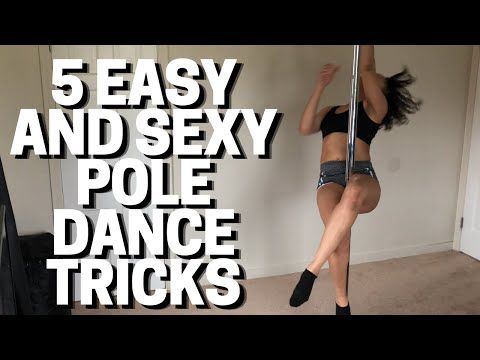 Advanced Pole Mastery does not disappoint in the respect.
Advanced Pole Mastery does not disappoint in the respect.
Get your copy on Amazon
The Pole Fitness Series
This Pole Fitness Series DVD Set consists of 3 separate DVDs. These are pole conditioning DVDs, with each one focusing on cardio, toning and flexibility.
This fitness routine is suitable for all levels and will help build/maintain your overall fitness as well as condition your body for pole dancing. If you use this link below, you’ll get $10 off – how great is that?!
Check out our list of the Best Pole Dancing DVDs! (Opens in a new tab)
Get Involved With the Community
Don’t be a poler in solitude! Speak to others who are learning at home too! The online Pole Dancing Community is incredibly active, check out Studio Veena’s Forums and our Pole Dancers of Pinterest Group Board to start with!
There’s also a tonne of Facebook Groups, Twitter feeds, and blogs about pole dancing to follow.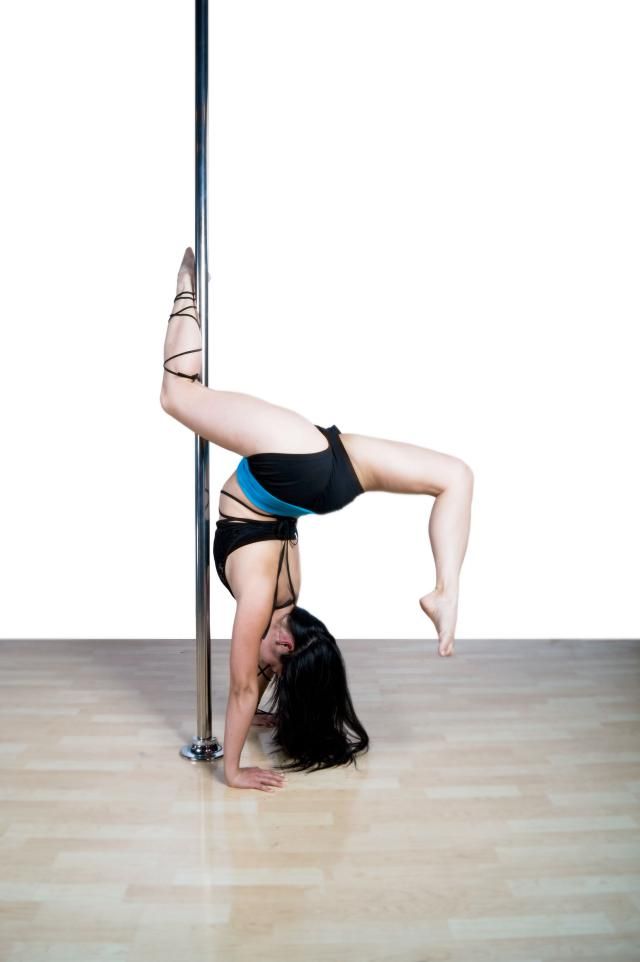 You could even start your own blog to document your pole journey and inspire others to do the same!
You could even start your own blog to document your pole journey and inspire others to do the same!
Further Reading
For more information about learning how to pole dance at home, check out some of our other posts and articles. Here are just a few that you may be interested in:
- All About Freestanding Dance Poles
- Best Pole Dancing Books for Inspiration & Motivation
- Everything You Need To Know About Freestanding Dance Poles
- Health Benefits Of Pole Dancing
- How To Learn Pole Dancing
- Inspirational Pole Dancing Quotes
- Other Workouts For Pole Dancers To Try
- Pole Dancing Routine Songs
- Portable Dance Poles And Renting – A Complete Guide
- Portable Dance Pole Buyer’s Guide
- Protect Your Wrists As A Pole Dancer
- Simple Warm-Up For Pole Dancers Of All Levels
- Treat Your Pole Dancing Bruises & Burns
- What Does Pole Dancing Do To Your Body?
The Ultimate Pole Tricks Handbook
This is the only step-by-step ebook on the market for real pole dancing moves.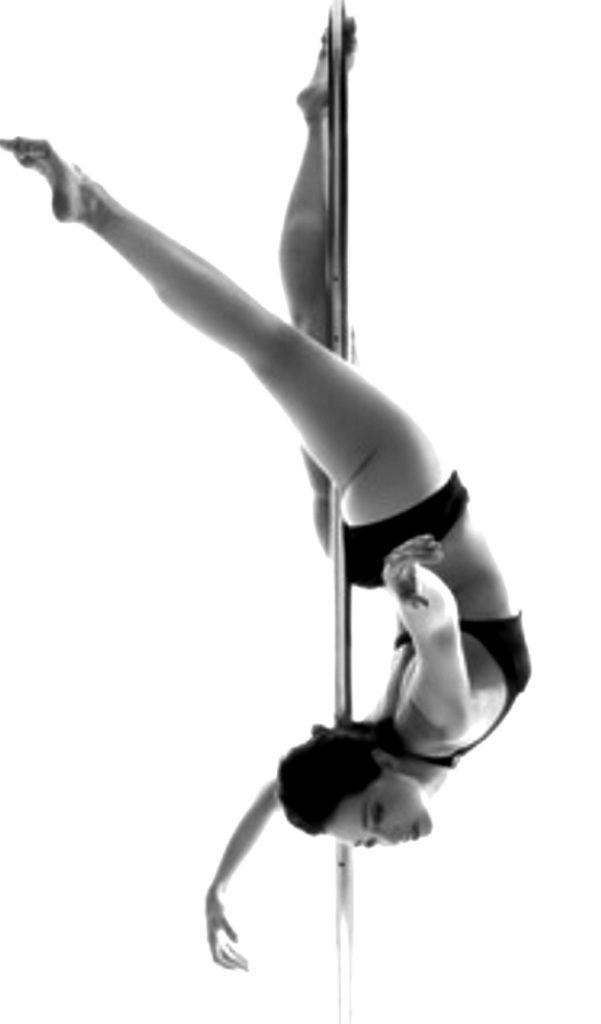 The guide is extremely detailed in getting your hands placed correctly for performing moves of all levels.
The guide is extremely detailed in getting your hands placed correctly for performing moves of all levels.
Get your copy here
Pin This Guide
Pin this to your Pinterest boards to save this guide. What are your tips for learning pole dancing at home? Leave a comment below to share them with our readers!
Happy poling!
This post contains affiliate links. That means that, at no extra cost to you, we may receive a small commission if you buy a product using one of the links on this page. Read our full disclosure here.
Getting Started Pole dance
Pole dance is a mixture of dance, gymnastics, acrobatics and fitness, in which everything revolves around the pole. This is not a boring activity, which at the same time helps to become more self-confident, more graceful, more plastic, overcome the fear of heights, get rid of excess weight and form a beautiful figure, get rid of back pain and improve posture.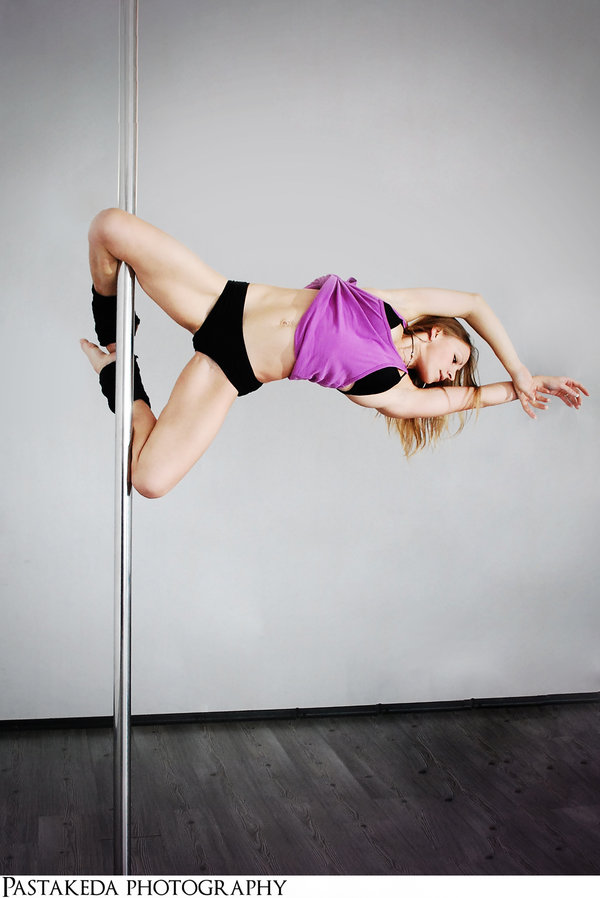 And this is not all the benefits of pole dancing. It is especially important for those involved that they have no restrictions on age and gender.
And this is not all the benefits of pole dancing. It is especially important for those involved that they have no restrictions on age and gender.
You can start mastering the pylon at almost any age and with zero physical fitness. To do this, it is enough to find a suitable school, a professional trainer and strictly adhere to the recommendations received from him.
Preparation for classes
If you want to try Pole dance, start with:
- get acquainted with the style and directions of pole dance (sport, exotic, artistic pole). Think about which direction suits you best and for what purpose you would like to master the pylon - to awaken femininity, tighten your figure or, for example, go into professional sports;
- selection of a suitable school and coach. Talk to your friends, read online reviews, explore all possible options. Go to school and talk to the coach. Ask how much he has already been doing, what he profiles, what results he has achieved.
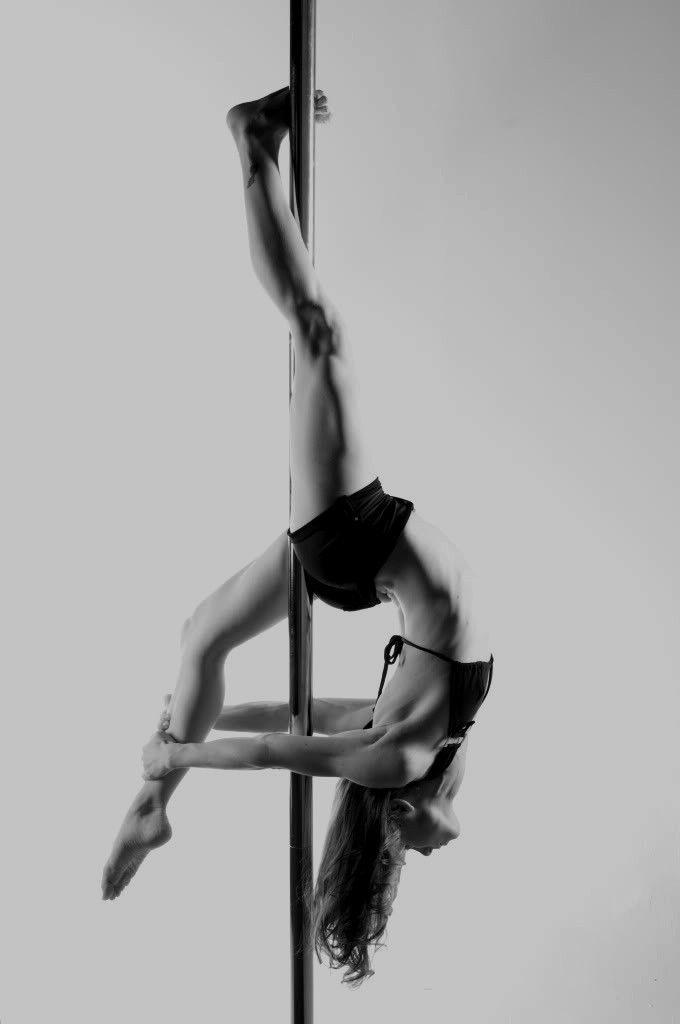 If the contact is immediately established, it will be easy and pleasant for you to work together. School should be comfortable. Inspect the halls and locker rooms, ask about compliance with safety regulations. Pole dance is still a traumatic direction, it is better to pay attention to this issue in advance;
If the contact is immediately established, it will be easy and pleasant for you to work together. School should be comfortable. Inspect the halls and locker rooms, ask about compliance with safety regulations. Pole dance is still a traumatic direction, it is better to pay attention to this issue in advance; - purchases of special clothing. You can consult with the trainer about the form for classes. You will need comfortable pulling clothes (top, shorts), possibly ballet flats;
- trip to a trial lesson. Take a trial class to see if pole dancing suits you. If you like everything, buy a subscription. If not at all, it is better to look for another hobby, because exercising through force will not give the desired result.
For beginners, this “preparation” for learning Pole dance is indispensable. It is followed by the first classes, physical activity and mastering tricks on the pylon.
First steps in Pole dance
It is better to start training on the pole in group or individual lessons with a trainer, strictly following all his recommendations.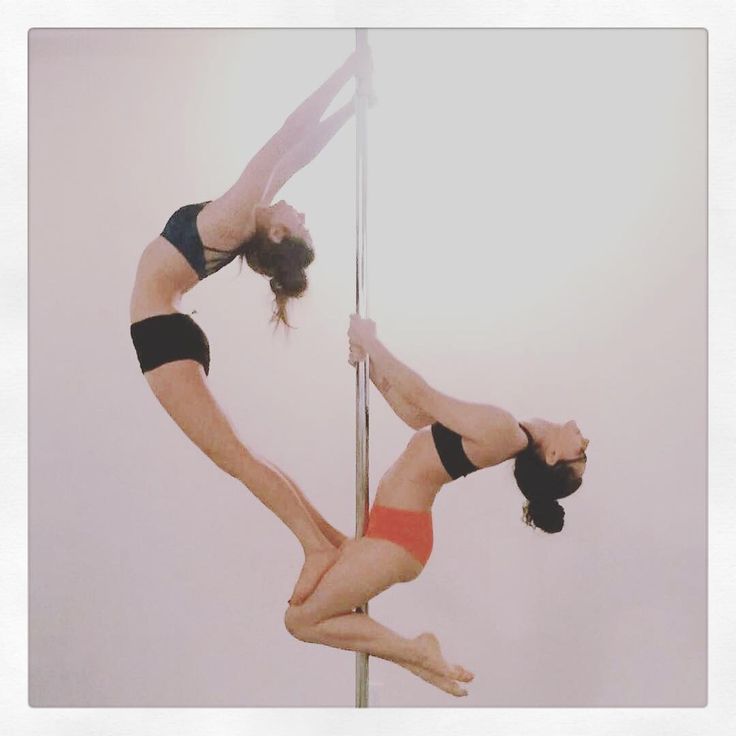 It is not recommended to learn Pole dance from scratch at home - you can get injured and slow down the learning process.
It is not recommended to learn Pole dance from scratch at home - you can get injured and slow down the learning process.
As a rule, beginners are recruited into groups at the same time and train with a gradual complication of the program. Exercises are mastered from simple to complex. First, you will learn to feel the pole and control your body, and you will work on improving your stretching and fitness.
Do all the exercises suggested by the trainer, but only these. Do not try to quickly jump to more complex figures and climb to a greater height. Do so many repetitions that the trick is perfect and effortless. Gradually gain altitude, be sure to ask questions if one or another point remains incomprehensible even after explanation and demonstration.
From the first lesson, train at full strength, do not give up if something is difficult. Enjoy what you are doing, and then the result of pole dancing will not keep you waiting.
How to start pole dance
Irina Malchukova
opened a pole dance studio
Author profile
I taught pole dance for six years, five of which I ran my own pole dance studio.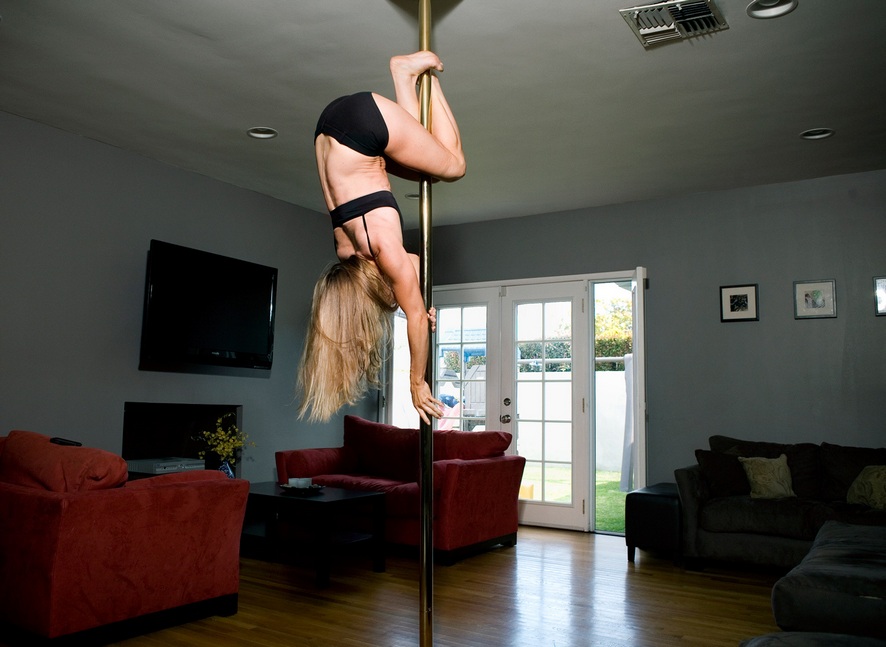
To do this, I completed two special courses and participated in several master classes, my productions won prizes in regional competitions more than once.
I'll tell you how to start practicing for a beginner, what to buy, why half-dance can replace fitness and how to choose the right pole dancing studio.
What is half dance
Half dance is a pole dance that combines elements of choreography, gymnastics and acrobatics. In fact, this is a general concept. Now there are several directions that differ from each other: Exotic Pole Dance, Pole Art and Pole Sport. I will tell about them further.
Pylon, or pole, a polished metal tube for grasping with hands and clutching with legs or other parts of the body. Its diameter can be 40, 42 and 44 mm.
/motivation-sports/
Work out with a trainer and try different activities: 7 tips to love the sport
Usually made of stainless steel, this ensures a smooth glide and at the same time a good grip on the skin.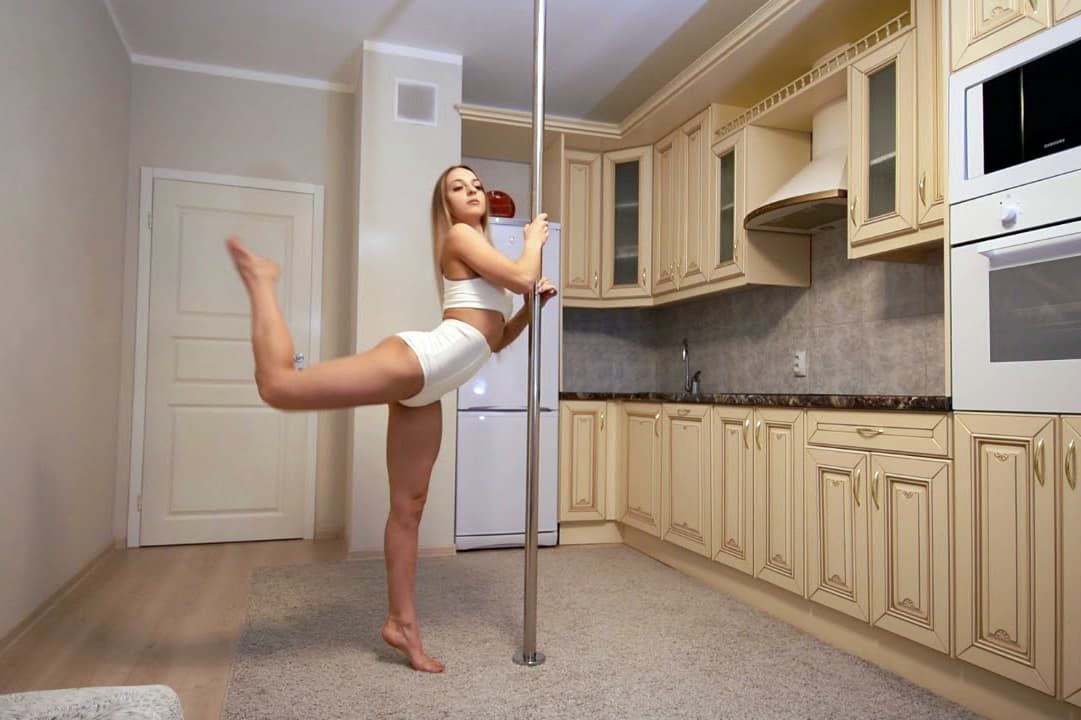 Pole dancers don't like it when a pole is called a pole.
Pole dancers don't like it when a pole is called a pole.
There are static poles - about tricks that are performed on such a pole, they say "in static", and also rotating ones - dancers say "in dynamics". In what follows, I will use these terms.
Most often, poles in professional studios have two modes at once. Due to simple manipulation, "dynamics" turns into "statics". In competition, dancers must be able to do tricks on both static and rotating pylons.
These are poles, or pylons - such were in my studio. I twisted the pylon from dynamics to static with the help of a key. Photographer: Vyacheslav RuchkinThey fix the pylons in different ways:
- Spacing between floor and ceiling.
- With one fixed fixing to the floor or ceiling only.
- Two fixed fasteners at once. This option is the most reliable.
One fixed mount in studios is also acceptable. If the pole is installed only at a distance in a dance school, I do not recommend doing complex tricks there or spinning strongly.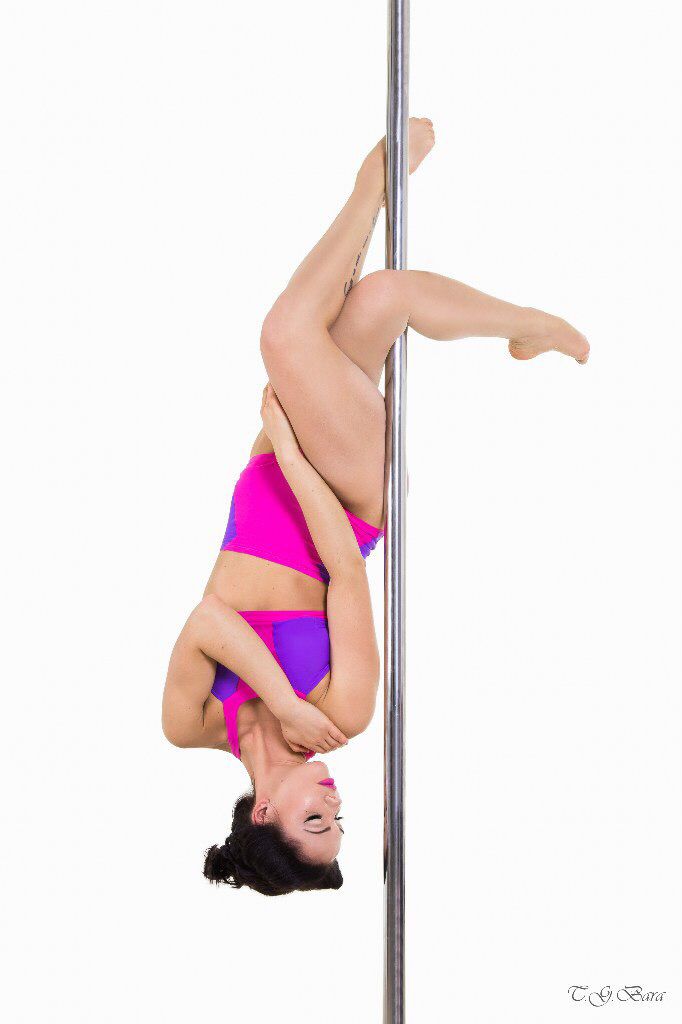
There are also portable pylons - these are structures that can be transported with you or quickly assembled on site. Usually they are used for performances, since it is not safe for students to study on them in a constant stream.
Pylon supports that are fixed to the floor and ceiling. Source: Pilonexpert Portable pylon. Source: thepole.euelements are called tricks that are done on a pole. There are several levels of the pylon where they are performed:
- Upper - acrobatic stunts are performed here at a height of more than two meters above the floor.
- Medium - perform rotations, plastic or dynamic elements at a height of 1-1.5 meters above the floor.
- The lower one is the stalls. Usually this is plastic or acrobatics, which is performed both with and without a pylon.
In 2021, pole sport was officially recognized in Russia. This means that the Ministry of Sports of the Russian Federation will coordinate all the rules by which half-dance competitions are held, there will be sports categories for participants, judges will have to undergo certification, and half-dance federations will have to be accredited.
Order of the Ministry of Sports of the Russian Federation, in which half-dance was included in the register of sports
Dance schools offer half-dance classes not as a sports discipline, but as exercises for stretching, working out the muscles of the legs and arms.
| These are elements on the pylon, or tricks |
Half-dance directions
Pole Sport or FitnessIn this direction, most of the time is devoted to trick and power elements on the pylon. There are about 70% of tricks in the performance, and 30% of the choreographic or parterre part. To simplify, half-sport is similar to gymnastics.
Competitions are often held in this direction. Mandatory elements are defined for them - those that a dancer must be able to do and show at the competition. Each element is evaluated by points: they look at the purity of execution, clarity of lines, and other criteria. Sometimes there are restrictions on touching the floor during a performance.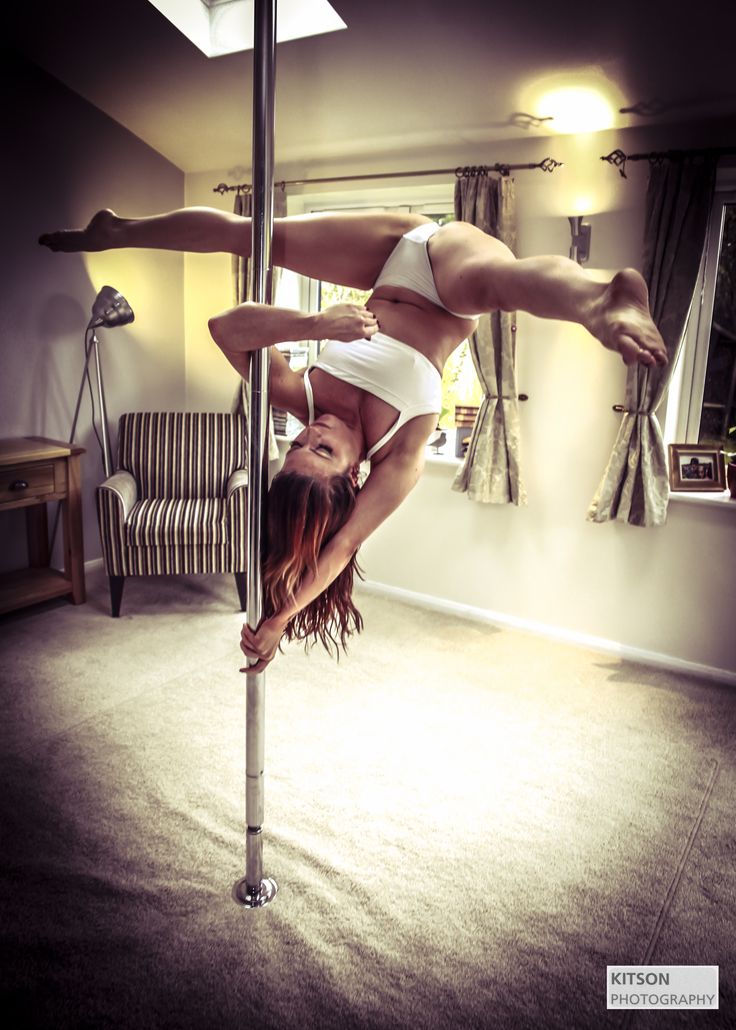
Pole dance directions
Exotic Pole DanceThis is a dance direction where the emphasis is on choreography, plasticity and musicality. Exotic is danced in special shoes - strips, they have a high platform and heels. This is the most feminine direction. If compared with others, we can say that exotic is strip plastic with a pylon, where there is a trick part.
Important: in exotic pol-dance one does not completely undress. You can take off some item of clothing in the room - gloves, a neckerchief, ears from your head. But it is forbidden to expose the genitals or breasts.
This is what special shoes for exotics look like - strips. Photographer: Sergey PatrushevExotic pole dance is also divided into several types.
Exotic Flow features smooth and slow movements. The ratio of tricks and choreography is about 20/80. It does not require complex elements, but acrobatic stunts are more like dance accents. The main thing in this type of dance is the choreography at the pylon and the parterre technique at the very bottom.
It does not require complex elements, but acrobatic stunts are more like dance accents. The main thing in this type of dance is the choreography at the pylon and the parterre technique at the very bottom.
Exotic Hard - more energetic and sharp dance. The ratio of trick and choreographic parts is 70/30.
The main thing here is the ability to perform acrobatic elements on the pole in strips. The image and idea of the dance are also important.
Energetic exotic hardOld School is the most sensual and feminine direction. The ratio of tricks and choreography is 40/60.
Particular attention is paid to musicality, dance elements, and tricks are chosen as smooth as possible.
Sensual old school directionPole dance directions
Pole ArtThis is a harmonious combination of power elements and choreography, that is, 50% dances, 50% tricks. Artistry and presentation are important here. For example, sometimes they dance a modern stage dance, only with a pylon. At pol-art competitions, revealing and defiant clothing, sexual movements are prohibited.
The main difference between half-art and exotic is that it is not a seductive dance that shows sensuality and femininity. Half-art is danced not in strips, but barefoot or in special shoes, the clothes are strict, not sexy, there are no playful movements or coquetry with the audience. If in exotic the task is to seduce the viewer, then in half-art it is to tell a story, show the emotions and experiences of the hero.
All directions of half-dance are intertwined with each other. It will not be possible to dance exotic or art without tricks, so the basic elements of half-sport will have to be mastered.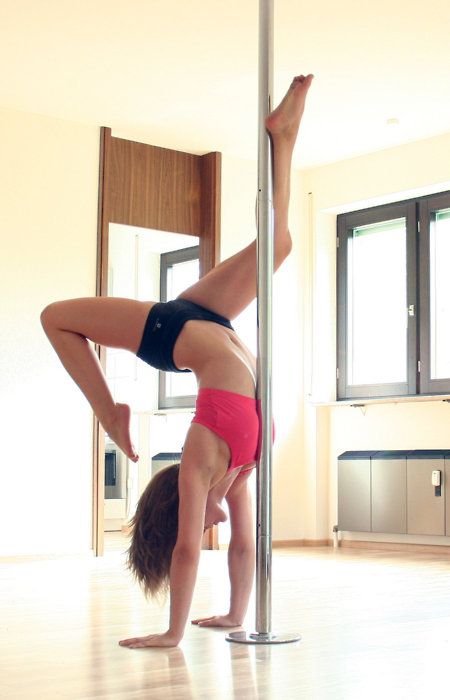 At the same time, staging a half-sport number will not do without choreography.
At the same time, staging a half-sport number will not do without choreography.
I recommend combining two directions: trick part and dance part.
Pole art is reminiscent of stage dancingBenefits of pole dance
Pole dance seems to be easy because the dancers' movements are easy. In fact, you need endurance, flexibility, coordination.
Calorie consumption calculator for half-dance classes
One session actually replaces a circuit training, where exercises for different muscle groups are repeated several times - the same number of calories can be spent.
In addition, pole exercises train the skill of controlling the whole body. You need to be able to keep yourself on your hands, on your feet, to maintain balance in static. Different muscles work, over time the body becomes toned. Due to twists on a rotating pylon, the vestibular apparatus is trained.
Abs and back. Many tricks must be done statically. For example, handstands. In this case, all the stabilizing muscles are involved, the press and back work, the ligaments are strengthened, strong core muscles are formed.
/list/sports-myths/
“We need to close the carbohydrate window” and 9 more common myths about sports and health
Upper body. With the help of your hands, you need to climb the pylon and hold your own weight. Shoulders, biceps and triceps, pectoralis major and other chest muscles, upper back work.
Lower body also works. For example, there are hangings on the legs - if you do not strain your leg muscles, you can fall off the pylon. Body weight must be maintained with the help of the muscles of the thigh and calves, gluteal muscles. Some entry-level twists work the upper thighs, glutes, and lower back at the same time.
Stretch - there are beautiful elements that require a leg stretch and a flexible back.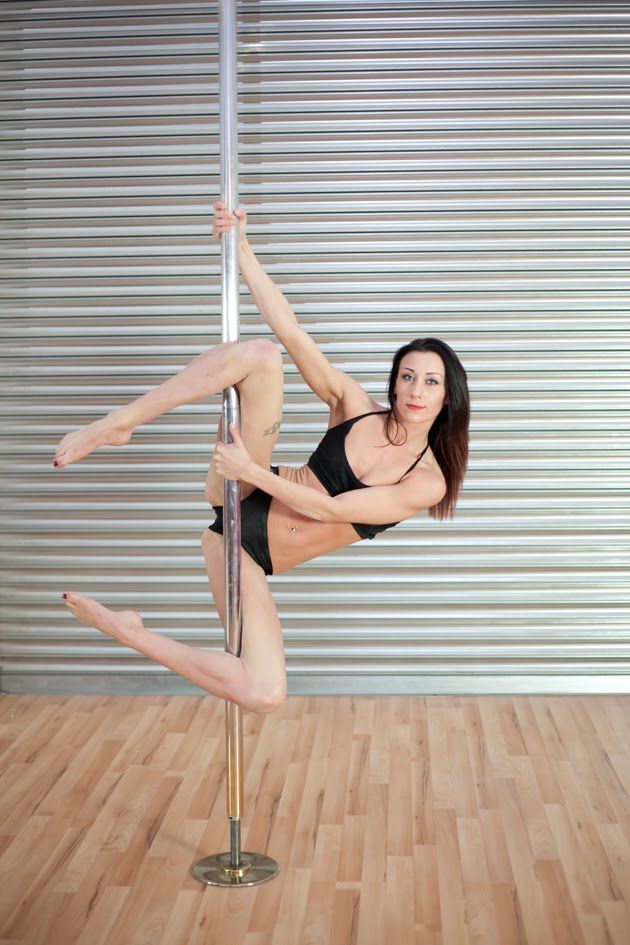 I recommend attending stretching classes separately. If this is not possible, performing tricks on the pylon will eventually develop plasticity anyway.
I recommend attending stretching classes separately. If this is not possible, performing tricks on the pylon will eventually develop plasticity anyway.
In addition, tricks must be constantly practiced - this requires stamina.
I will also note: many people gain self-confidence, because each mastered trick is a small victory.
Who suits half-dance
The most difficult thing is to decide to come to the first lesson. Popular newbie fears:
- I can't do it;
- everyone already knows how, but I don't know anything;
- I don't have enough strength, I won't lift myself onto the pylon;
- I don't have the ear to dance;
- I am overweight;
- everyone has splits, but I don't have a stretch.
In fact, everything is not so difficult. You can start from scratch without any preparation.
/fitness/
How to save money on sports
Even if a person was a professional athlete or dancer, he too may fail at the first training session.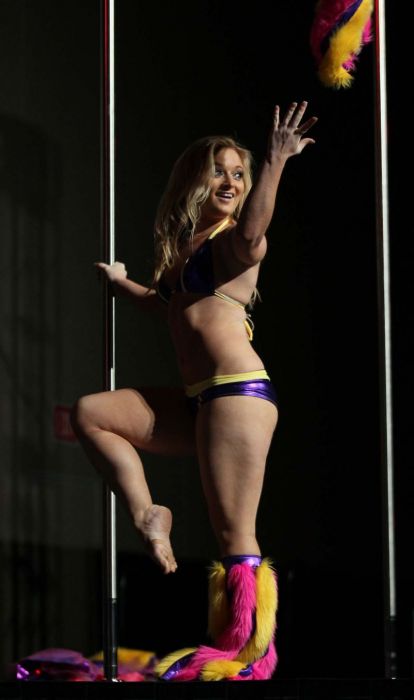 And this is absolutely normal, because pole exercises are a special load: the work of the whole body, coordination, grip due to the skin.
And this is absolutely normal, because pole exercises are a special load: the work of the whole body, coordination, grip due to the skin.
Usually students are divided into groups of beginners and those who have been studying for a long time. This is done for convenience: everyone works out the same tricks, can see each other's mistakes or direct a neighbor on the pylon in the right direction. Beginners can safely join groups of beginners: they are not far behind in the program and will quickly catch up with their level.
I note that the pole is an amazing thing: at the very first training, a person understands whether it is him or not. In six years, I have never met a person who quit half-dance after three, five, ten classes. Usually a student lights up and stays for a long time, or realizes that he is interested in another sport, and is no longer interested in half-dance.
Development is gradual. First you start to hold on to the pylon, then you know how to spin and climb it correctly, and then a whole world of tricks and combinations opens up.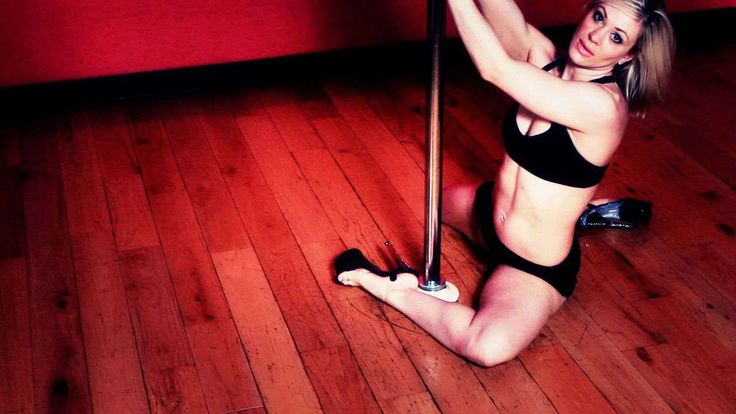 I want to do and try everything, capture it in a photo or show it in a dance number. I would say that the excitement turns on: can I do it. It moves forward, so classes are rarely abandoned.
I want to do and try everything, capture it in a photo or show it in a dance number. I would say that the excitement turns on: can I do it. It moves forward, so classes are rarely abandoned.
But half-dance is hard. You have to work on yourself, laziness, fears and pain. Sometimes you have to work out the same element twenty, thirty, forty times - this can get boring and exhausting. You really need to catch fire and be hardy - without this, nothing will work. Sometimes you have to wait a long time for results - both in tricks and in terms of physical form.
Dance studios often hold open lessons or give the first lesson for free. It is better to use this opportunity to try half-dance and understand whether you like it or not.
How is the half-dance class
Warm-up. At the beginning of each lesson, regardless of direction, 10-15 minutes - warm-up from head to toe.
If the student is late, he warms up on his own or is not allowed to the lesson.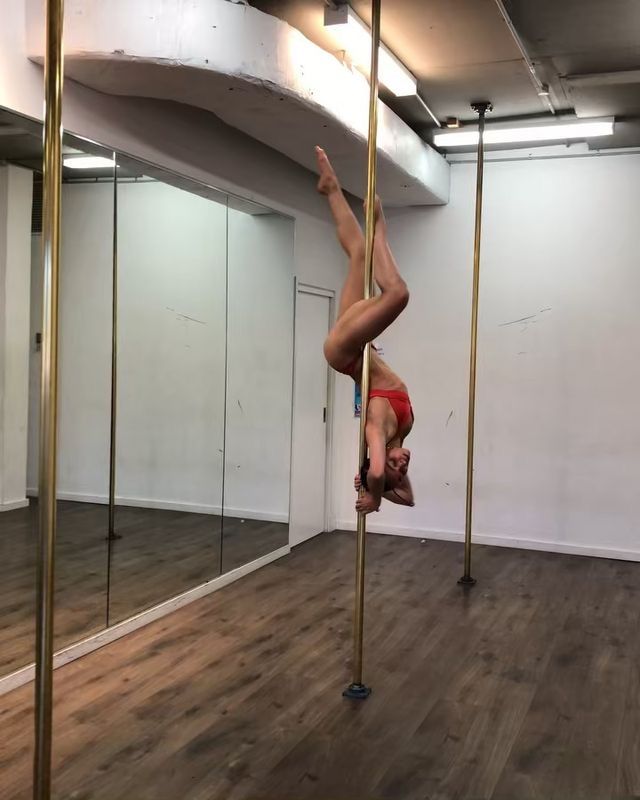 Without warming up the muscles, you can get injured - this part of the workout is mandatory. In semi-sports, attention is paid to the joints, and in exotics, they can include light basic dance elements: various waves, hip and chest rotations.
Without warming up the muscles, you can get injured - this part of the workout is mandatory. In semi-sports, attention is paid to the joints, and in exotics, they can include light basic dance elements: various waves, hip and chest rotations.
Main part. After the warm-up, the main part comes: in exotic or art, they learn the movements and the connections between them or repeat what they learned earlier. As a rule, it takes from three to six lessons to practice the dance, and from two to four, depending on the complexity, to practice the dance.
/stretching/
How I Became a Stretching Instructor
In a semi-sport, the lesson is different: the trainer explains and shows the trick that needs to be mastered and done. Up to two people can practice on one pylon. If more, the students are already uncomfortable: they will not have time to fix the element.
Periodically repeat old tricks or twists. This shows progress well: you can compare how the element was done before and how it is done now.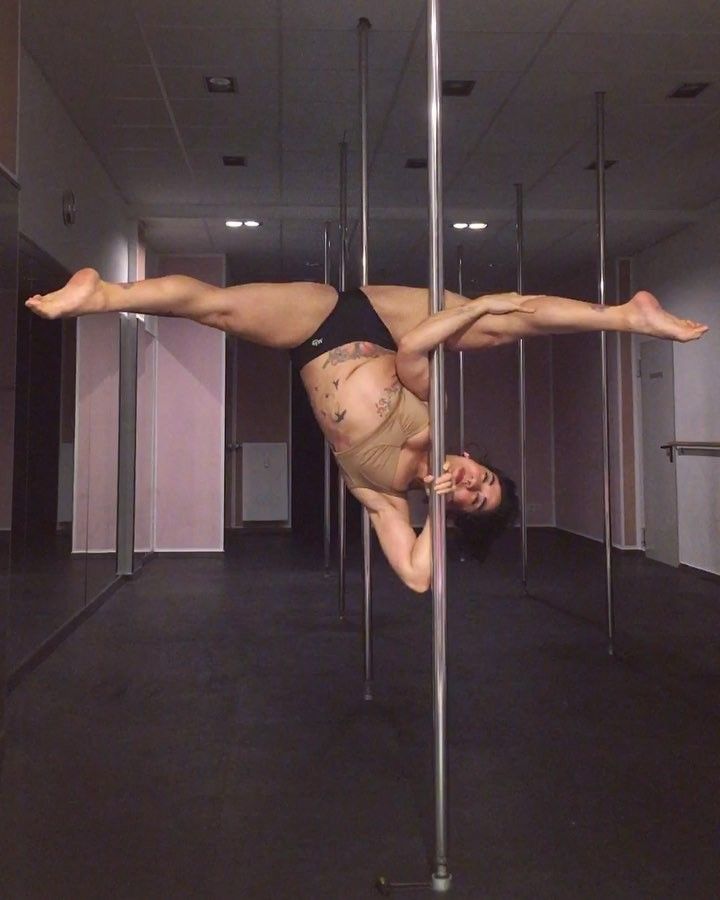 If the student already knows several tricks, the coach comes up with combinations - when you go from one element to another.
If the student already knows several tricks, the coach comes up with combinations - when you go from one element to another.
Learning goes from simple to complex. For example, at first there will be simple elements like a “barrel” - they are needed so that the student gets used to the grip with his hands and steps over the fear that he will fall from the pole.
At the first lesson, it seems that you are not holding on and constantly slipping, this is normal. Then the hands get used to it, stop sweating, there is strength in the muscles and self-confidence.
For half-sports, there is an example program for students to learn tricks. Of course, everyone goes at their own pace, but after a month or two you need to be able to do the simplest grips, for example, hanging on the far and near leg, on the elbows.
Beginner's version of twist - "barrel". Source: body-bar.ru Hanging on the far leg is already more difficult Every studio must have safety mats: you learn to perform complex tricks only with them.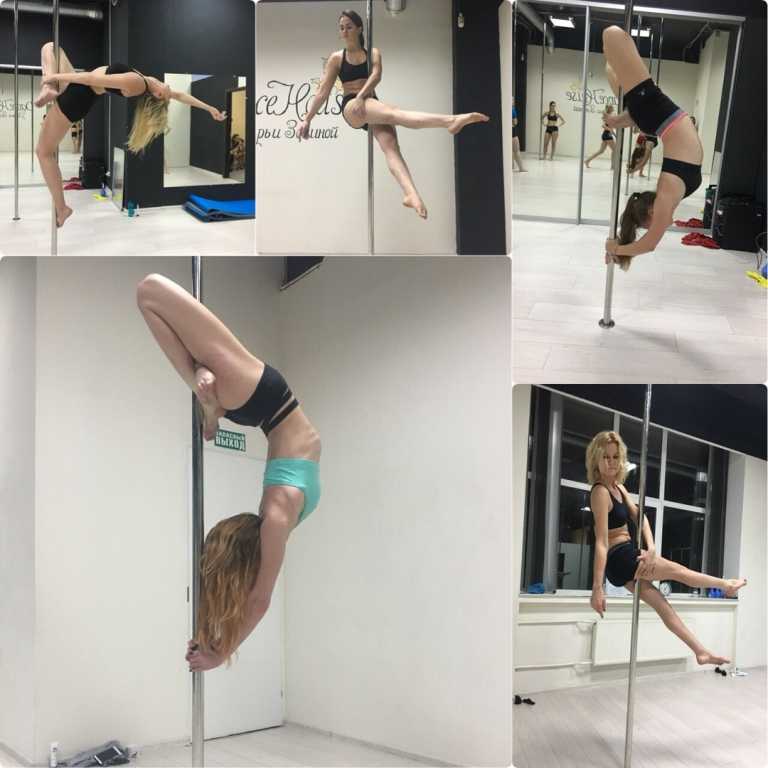 But beginners are also offered to take a mat so as not to get injured.
But beginners are also offered to take a mat so as not to get injured.
There is always alcohol or vodka and a rag in the studio - this is necessary to degrease the pylons, otherwise there will be no adhesion. Students can also use talcum powder or powder that dries their hands or feet so that they do not slip on the pole and do not roll off it. There are also other means for this, such as magnesia.
I don't recommend using talcum powder or anything else, otherwise your hands and feet won't get used to the grip - it's better to learn how to hold on right away without traction aids. Moreover, it is forbidden to use them at half-dance competitions.
Cooldown may vary between dance studios. Usually, after the dance part of the exotic, there is a slight stretch, and in half-dance they finish off the muscles: they pump the press, sometimes with a pylon, do push-ups, stand in the plank.
How are performances and pole dance competitions
Reporting concerts.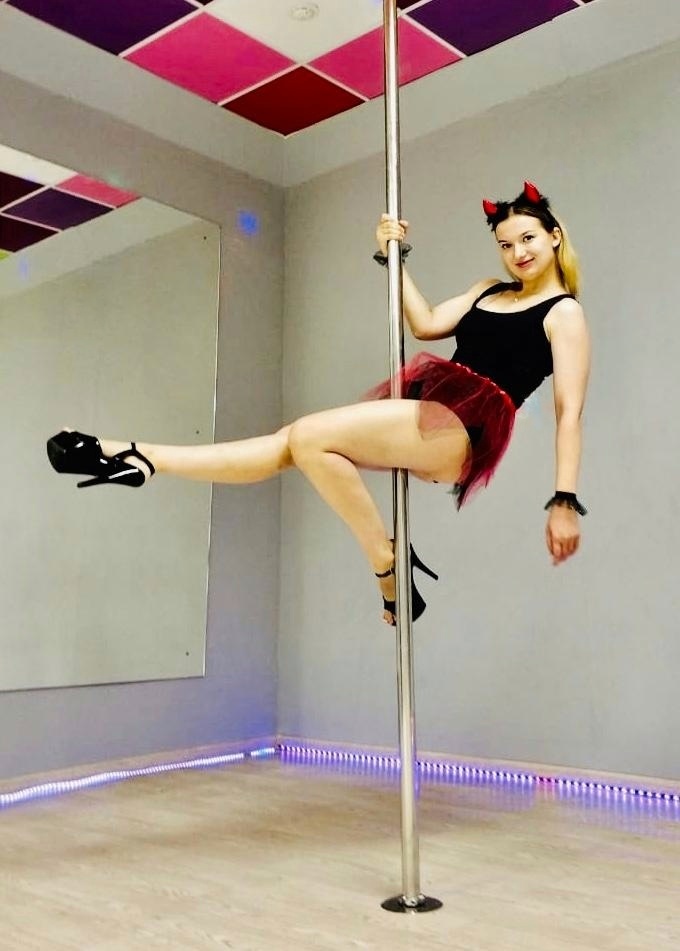 Each studio holds reporting concerts, in which everyone can participate. Coaches prepare group numbers - not only dance, but also stunts, as well as solo performances when a person performs alone.
Each studio holds reporting concerts, in which everyone can participate. Coaches prepare group numbers - not only dance, but also stunts, as well as solo performances when a person performs alone.
As a rule, they start preparing for the reporter in advance - several months in advance. Sometimes concerts are held not in the studio, but in a cafe, restaurant, or even in the Palace of Culture. These are bright events in the life of students - their relatives and friends come to support them, and the dancers receive applause and a sense of the stage.
Reporting concert of my former studio. Photographer: Sergey PatrushevCompetitions. They are held in all directions of half-dance.
In half-sport, you need to show combinations of tricks that are included in the mandatory program. They must be performed on two pylons: static and rotating. There must be a dance part, but it rather fills in the gaps between the tricks.
Participants usually qualify for local city competitions or video selection.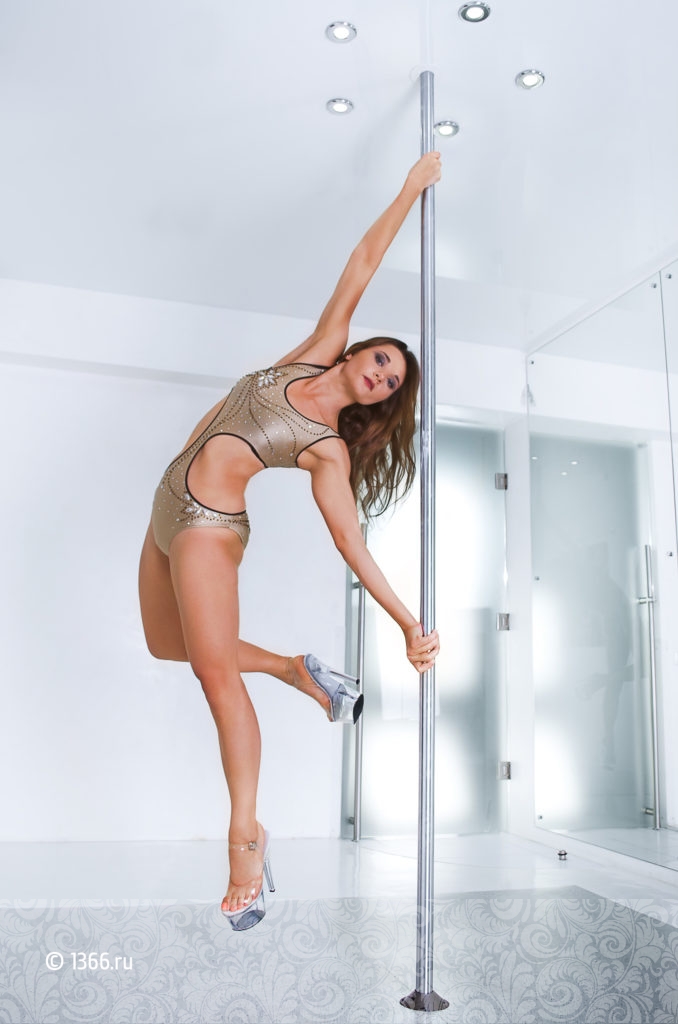 Competitions are easy to find: you can simply google or search for groups of competitions in social networks. The coaches themselves also follow the latest information and invite students to participate. Anyone can apply for the competition.
Competitions are easy to find: you can simply google or search for groups of competitions in social networks. The coaches themselves also follow the latest information and invite students to participate. Anyone can apply for the competition.
/spravka-dlya-sorevnovaniy/
How to apply for a certificate for participation in competitions
There are several categories: beginners, intermediate level, pros, children, duets, group performances. Well-known coaches and dancers are invited to the jury. All participants receive certificates or diplomas for participation, and the winners receive medals and prizes.
In exotic there is no obligatory condition to dance with two poles, the dancer can choose the pole mode independently. But you can only perform in strips - the jury evaluates how well the dancer knows how to use shoes. There are also categories here, and sometimes participants are divided into areas: old school, flow and hard.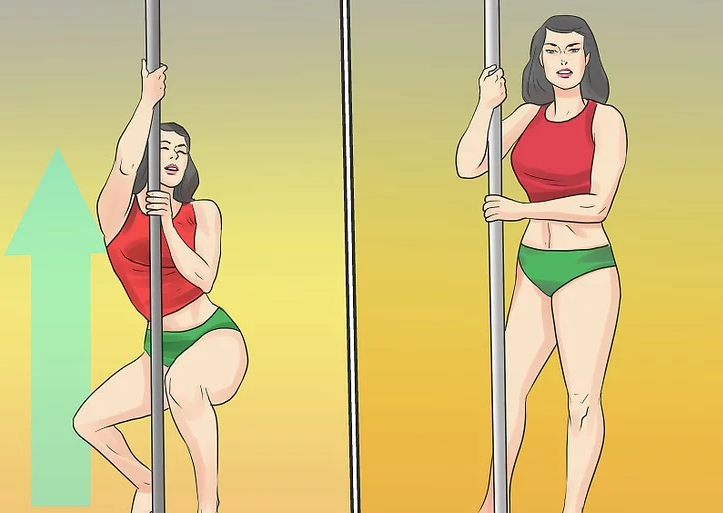
As part of the competition, invited jury members often give master classes and hold demonstration performances.
Preparation for competition takes at least three months. With pole-sports, the most difficult thing is to wait until the pole-dance organization hosting the competition releases a list of required elements, and then choose the required number of them. Each element is worth a certain point. Therefore, the dancer collects the maximum number of points from the elements that he can do.
In addition, you must perform all the tricks according to the requirements: hold out for a specific number of seconds, enter and exit the element correctly, observe lines or corners. If the participant fell, did not get the trick right the first time, slightly slipped from the desired position along the pylon, or did not hold out for the required number of seconds, he receives a penalty.
The jury also evaluates the choreography, artistry, image, presentation.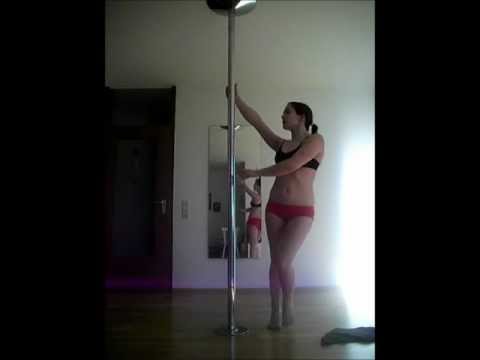 For example, you can’t sing along during a performance or look at the floor. If something went wrong and the participant left the stage during the performance, his candidacy is removed.
For example, you can’t sing along during a performance or look at the floor. If something went wrong and the participant left the stage during the performance, his candidacy is removed.
Competitors in semi-sports have strict appearance requirements: a swimsuit or shorts must be of a specific length, hair must be tied up, make-up is not bright. If a participant has underwear visible, he receives a fine for this.
Such stringent requirements are due to the fact that half-sport federations have been fighting for a long time to be included in the list of Olympic sports - and in 2021 it happened.
Exotic competition rules are not so strict, preparation for them is easier. But even here there are requirements: to do a certain number of tricks in conjunction, to follow the rhythm of the music, to include choreography and acrobatics in the stalls.
What you need for pole dance
Patience. The main thing is the desire and understanding that everything will not work out right away.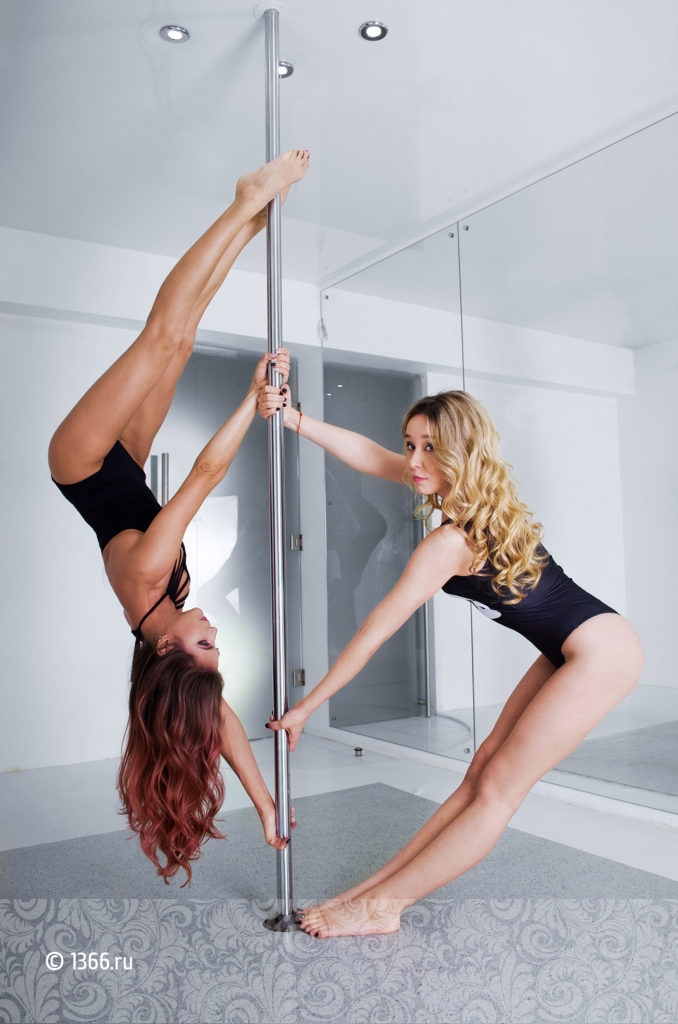 Any coach also once slid down from a pole, could not climb a pylon and was afraid to hang on one leg upside down.
Any coach also once slid down from a pole, could not climb a pylon and was afraid to hang on one leg upside down.
Clothes. For training, you need to take short shorts, a top or T-shirt, socks for warm-up and cool-down. Tricks in semi-sports are performed barefoot, and in exotics - in special shoes.
/sportstat/
What sports do Russians do
The more revealing the clothes, the better: you need a good grip on the pole, which comes at the expense of the skin.
Shoes. Exotics need shoes - strips. It is not necessary to buy them right away, but you need to bring at least high heels with you. Sometimes in studios they are not allowed to dance in ordinary sandals, as they scratch the parquet. Or they ask you to seal the heel with adhesive tape - this can be found out in advance when signing up for classes.
Strips vary in height: from one, which has a heel height of 15 cm, platforms - 5 cm, to five, which has a heel height of 25 cm, platforms - 15 cm.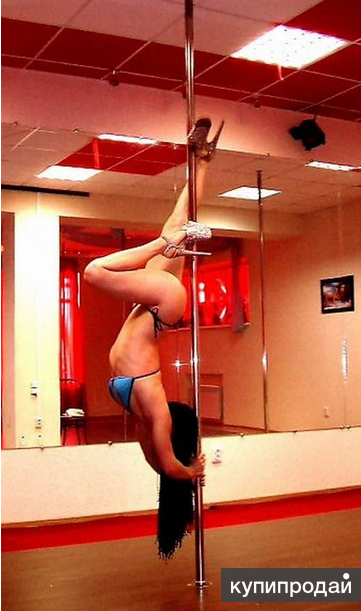 There are sandals, boots and even over the knee boots.
There are sandals, boots and even over the knee boots.
Beginners should start with ones. In the classes, you will not only have to learn how to stand and move on them, but also work out the elements on the bevels, that is, on the tips of the platform.
Knee pads. They are needed for exotics. There are many elements that must be performed while kneeling at the pylon. There are also tricks with jumping on your knees - here knee pads help soften the blows.
Bruise remedies. It is better to take care of possible bruises in advance - they can be in the most unexpected places. But this is temporary - as a rule, after two or three months, bruising is no longer a concern. Even at first, calluses may appear on the hands due to practicing the grip. Later, the skin will get used to it, and this problem will go away.
For accelerated healing of bruises, you can use ointments with heparin, and for the treatment of corns - a moisturizer and cream with urea in the composition.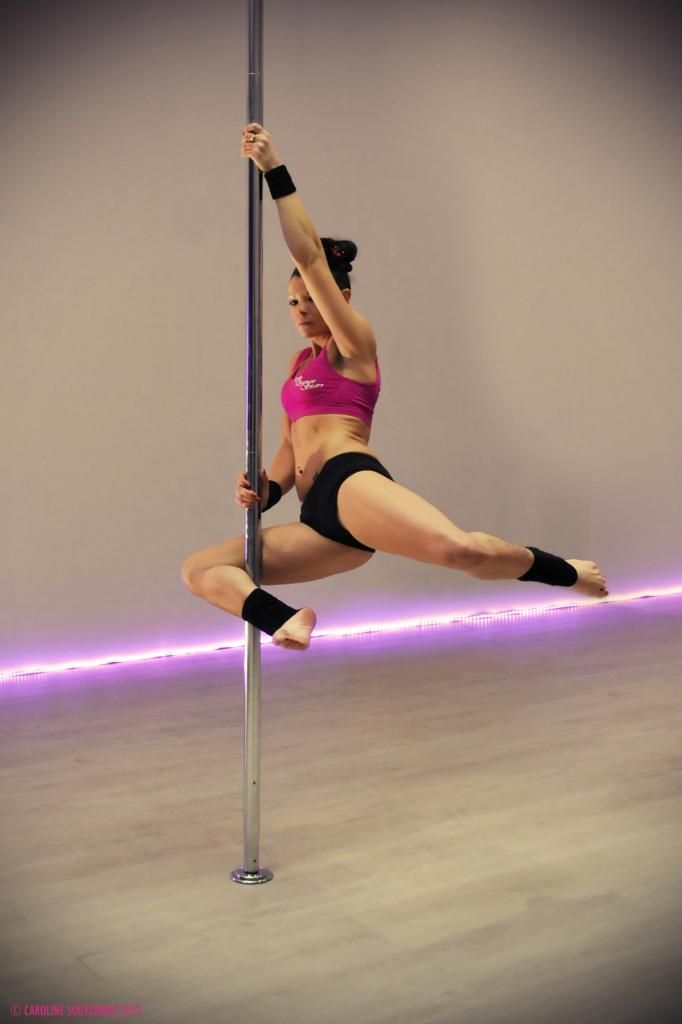
Who shouldn't do half-dance
Half-dance should not be practiced by people with severe chronic diseases, in particular, diseases of the heart, lungs, nervous system, kidneys, diabetes mellitus. That is, for those for whom any intense physical activity and leg injuries can be dangerous.
When to consult a doctor before exercising - Mayo Clinic
In addition, classes may be contraindicated for people who have diseases of the spine and joints when they should not be overloaded, or severe skin diseases that may interfere with pole training or be aggravated by friction.
This sport is also not suitable for pregnant women, as during the performance of tricks you can fall or hit your stomach.
/sport-pregnancy/
How to stay fit and healthy during pregnancy
In other situations, everything is decided individually. I have low blood pressure and problems with the vestibular apparatus, but I have been doing pole sports for six years. In any case, you first need to consult a doctor, explain what the loads will be, so that he gives permission for classes. Usually, studios do not require a doctor's certificate, but I recommend that you insure yourself and take care of your health on your own.
I have low blood pressure and problems with the vestibular apparatus, but I have been doing pole sports for six years. In any case, you first need to consult a doctor, explain what the loads will be, so that he gives permission for classes. Usually, studios do not require a doctor's certificate, but I recommend that you insure yourself and take care of your health on your own.
Safety precautions for half-dance classes
Half-dance classes are classified as traumatic, so safety precautions must be observed. Each studio introduces the student to the signature requirements.
Leather. On the day of class, you can not use cream, lotion or body oil, go to the solarium or sunbathe - in this case, suntan creams or sunscreens are also applied. Any substances on the skin impair grip on the pole and increase the risk of slipping off the pole.
5 frequent injuries during solo sports
Jewelry. They must be left at home - they will interfere.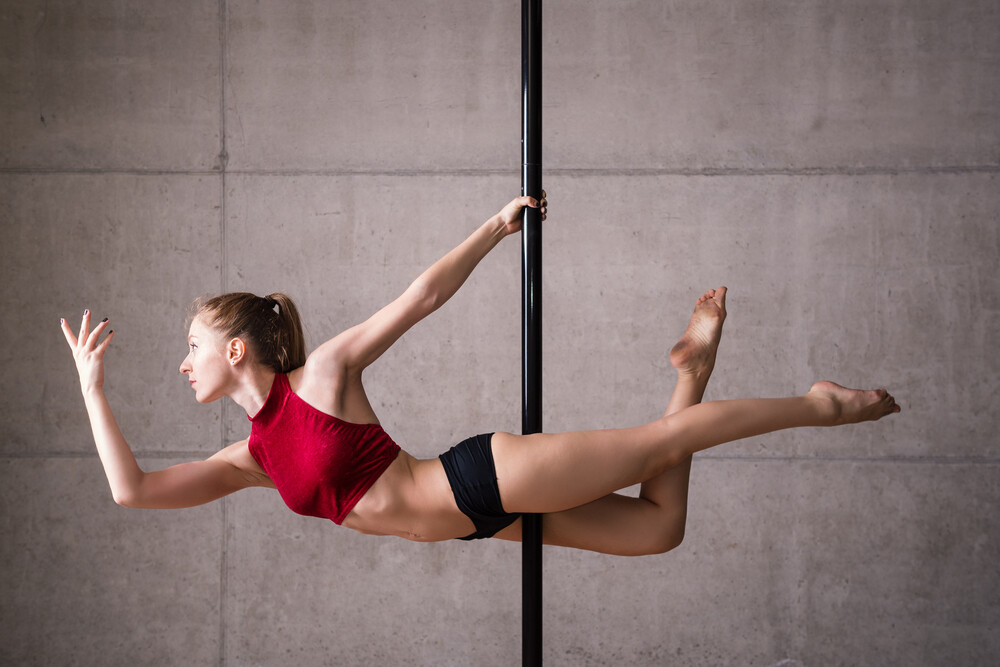 For safety reasons, the coach must ask to remove all rings, earrings, beads, chains, bracelets, sharp hairpins and piercings.
For safety reasons, the coach must ask to remove all rings, earrings, beads, chains, bracelets, sharp hairpins and piercings.
Hair. For semi-sports, it is better to collect hair, as it will interfere, and can also get tangled behind the pole.
For example, at one performance, my student's hair got caught in the bottom of the pole. Since she was twisting upside down, her hair was wound and caught. She was not injured, but she had to hang upside down while we pulled her hair out.
But on exotics, hair is usually left loose, because it is used for dancing: they twist or wave their heads, playfully throw their hair back with their hands.
Food. The last meal should be approximately two hours before training. Otherwise, twists on the pylon can make you feel sick.
Behavior in class. You can start training only after a warm-up, perform elements on mats and with a trainer's insurance. You can’t jump off the pylon, if it’s not provided for by the trick, it’s unacceptable to relax the holding muscles - you can slide off the pylon, dropping onto your shoulders or forearms.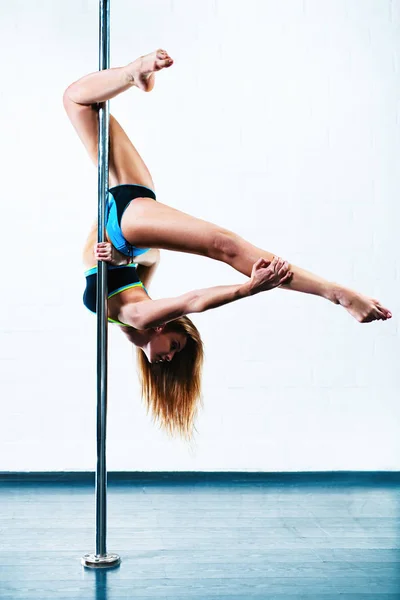
When performing tricks, it is important to keep a distance between yourself and other participants. In exotic classes, you need to work out the trick first with bare feet, and only then in strips.
What kind of injuries can you get during pole dance
Pole dance requires attention and concentration. There were cases when the dancers spun strongly, flew off the pylon and got a fracture. Sometimes equipment failed: it was not installed securely enough or poorly secured.
The most common and minor injuries that you can get in class are bruises or abrasions from hooks and hangs. At the beginning of training, until the skin is used to it, they will occur much more often. I have sensitive skin, so even after a few years, bruising periodically appeared.
/list/sports-health/
12 important questions for sports doctor Artem Ryzhenko
There is a high load on the joints and ligaments during the classes. For example, when performing some elements, the arms should be straight - in fact, the emphasis is on the wrist.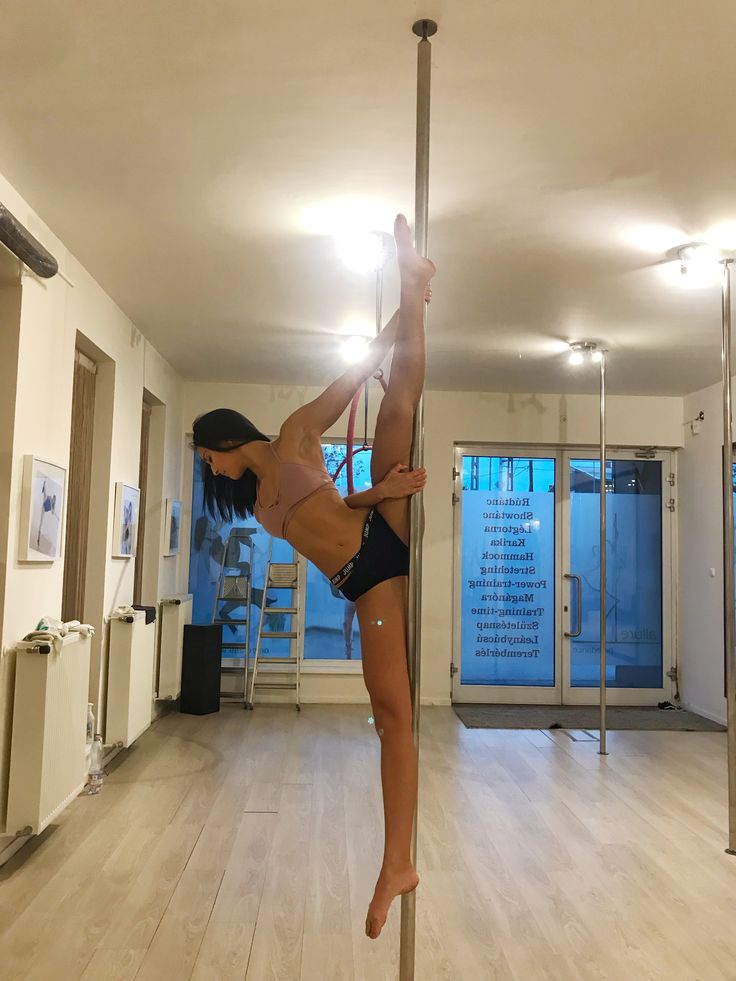 If this causes discomfort, wristbands or elastic bandages can be used.
If this causes discomfort, wristbands or elastic bandages can be used.
Six years later, I had a problem with the wrist of my left supporting hand - I always focused on it for racks and other elements.
It is very important to control your feelings: there should be no pain. If something hurts after completing the element, you need to rest. If the situation persists, you should consult a doctor.
And if a sprain or other minor injury occurs during the session, the training must be temporarily stopped. Until the body recovers, loading on the pylon is prohibited.
To avoid a fracture, it is important to follow safety precautions. The main thing is to never do tricks without mats and not let go of your arms and legs if the clutch has not happened. When it is clear that you are not holding on to the pole upside down, you need to tilt your head to your chest and slide down the pole to the floor on your shoulders. You should never tilt your head back to your back, so as not to fall in this position and injure your neck.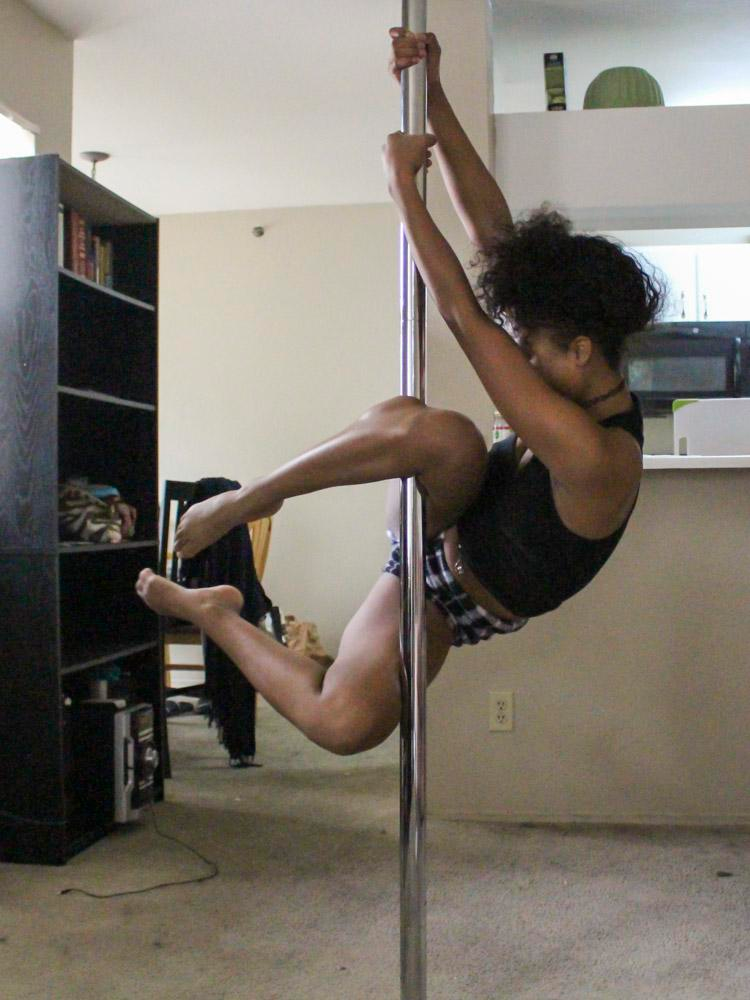
How to choose a pole dance school and coach
Equipment. It is necessary to check if there are mats, and ask how the poles are fixed, what company the pylons are installed. The highest quality ones are from Pole4You. Your health and life depend on it.
Teacher training. It is important whether the studio coaches have certificates confirming the right to teach half-dance. Otherwise, they may not properly apply the load, causing injury.
/list/dance-schools/
From waltz to bachata: where they will learn to dance in Moscow
It is necessary that the trainer learn the methods of teaching half-dance, go through theory and practice, pass tests and exams. Training cannot be less than 96 hours, because otherwise you cannot master the program.
Certificates are issued by half-dance studios with titled teachers and extensive experience. Typically, such organizations belong to a pol-dance federation or represent it themselves.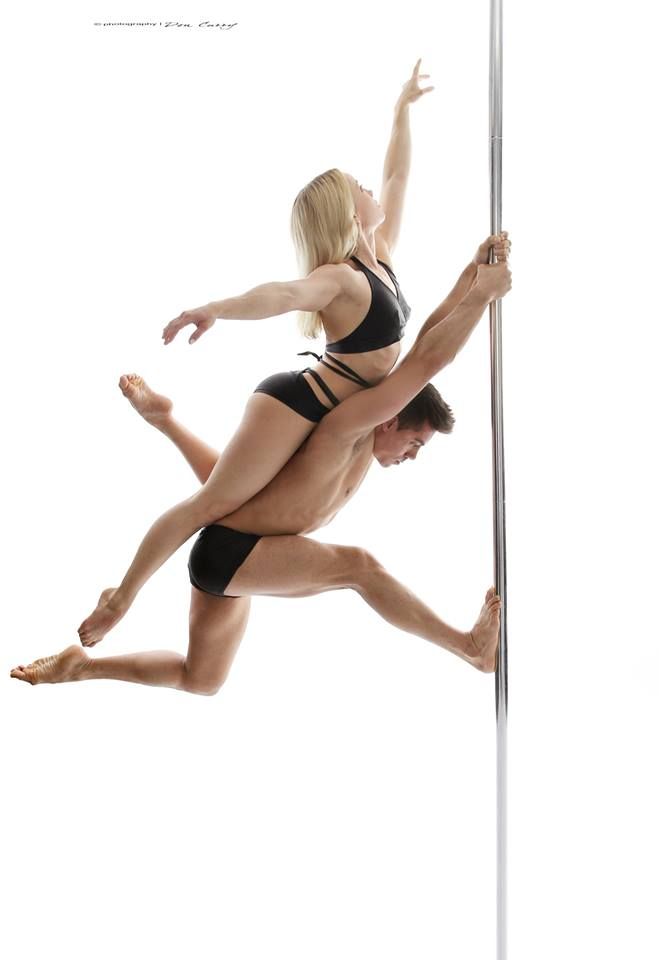
Competitions. It is important what competitions teachers and students of the studio take part in and how often: if the school is active in the outside world, then it will be more interesting to study there.
Number of students per pylon. There should not be too many students in groups - a maximum of two people per pylon. Otherwise, there will be no time to practice tricks.
First conversation with a trainer. The teacher needs to know about the physical condition, diseases and contraindications. You must be told what you can and cannot do in class, and you must sign an agreement with the safety rules.
Communication with the trainer. It depends on him what mood the student is in, how he progresses, what results he achieves. You should be comfortable with the coach. If this is not the case, you need to change the coach, otherwise effective training will not work.
Trainer qualification.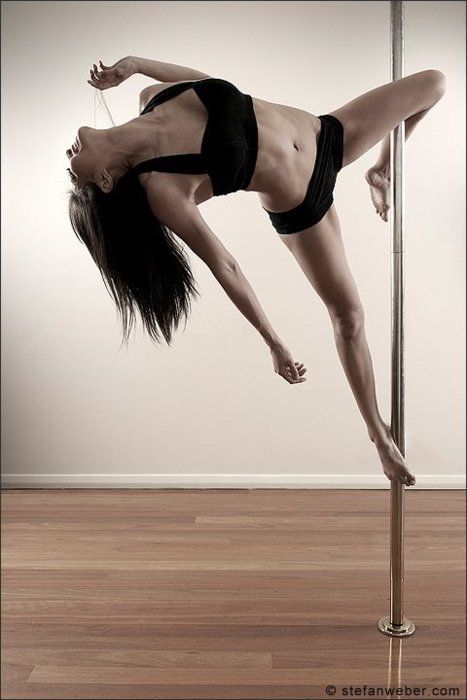 He must have completed half-dance courses. It is also worth asking about experience: how many years he has been teaching, what successes his students have. It is good if in the past the coach was involved in professional sports or dancing, usually in this case the quality of teaching is higher.
He must have completed half-dance courses. It is also worth asking about experience: how many years he has been teaching, what successes his students have. It is good if in the past the coach was involved in professional sports or dancing, usually in this case the quality of teaching is higher.
It is also important how clearly the coach explains the technique of performing tricks and how he monitors safety: does he insure each student, does he require the use of a mat.
How much does pole dance cost?
Regular lessons. Usually dance studios offer several subscriptions to choose from: 8, 12, 16 group lessons. It makes no sense to go to training less than twice a week, that is, you need at least eight classes a month.
To practice semi-sports, you will need to spend money on a uniform and a subscription. Exotic half-dance requires a lot of money: you will also have to buy special shoes and knee pads. Then you will only need to pay for a subscription to the studio and change clothes and shoes as they wear out.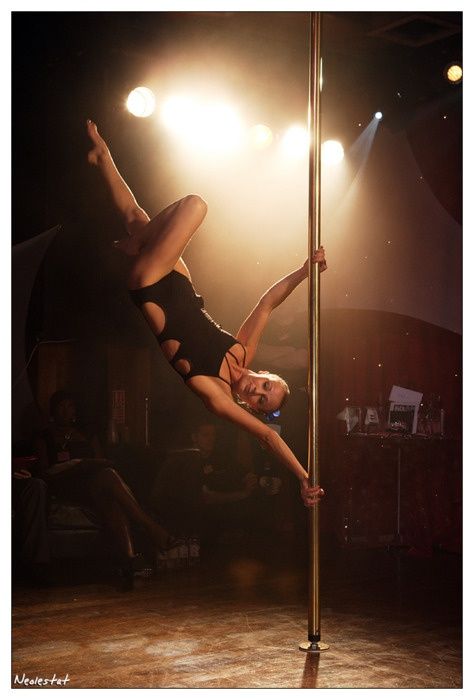
/list/hochu-mogu/
8 extreme hobbies that cost people a lot of money
Half-sport classes in the first month cost from 6500 R
| Subscription for 8 lessons | 2500-5000 R |
| Form: top and shorts | 3500 R |
| Socks | 500 R |
Subscription for 8 lessons
2500-5000 R
Uniform: top and shorts
3500 R
Socks
500 R
Semi-exotic classes in the first month cost from 13 000 R
| Strips | 5000 R |
| Subscription for 8 lessons | 2500-5000 R |
| Form: top and shorts | 3500 R |
| Knee pads | 2000 R |
Strips
5000 R
Subscription for 8 lessons
2500-5000 R
Uniform: top and shorts
3500 R
Knee pads
2000 R
Participation in competition costs - 9050 For example, the participation fee starts from 1000 R.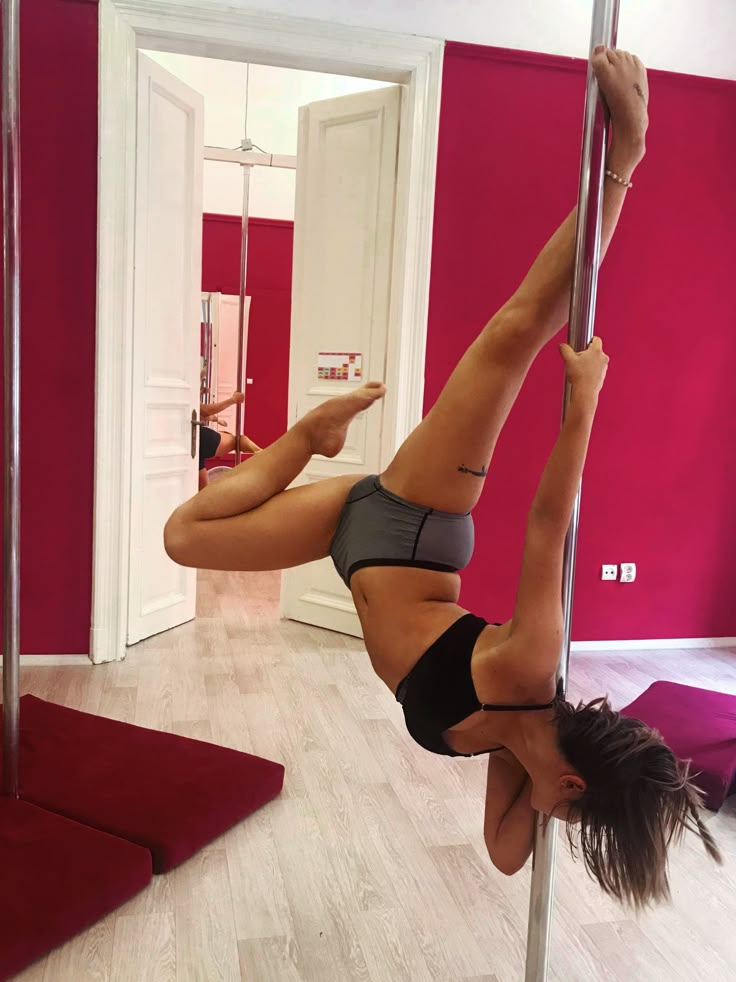 You also need to sew or buy a special suit - this is at least 3000 R. New strips for competitions are usually not bought. The dancer gets used to those in which he trains, in new ones there is a higher risk of falling.
You also need to sew or buy a special suit - this is at least 3000 R. New strips for competitions are usually not bought. The dancer gets used to those in which he trains, in new ones there is a higher risk of falling.
You also need to pay for individual lessons with a trainer to work out the number and rent the studio hall for independent training - they are needed to consolidate the result.
A personal lesson with a trainer costs an average of 1500 R, but its price can reach up to 3000 R. The number of lessons depends on the competitions themselves, the level of training, the complexity of the number. The minimum number of trainings for setting a number is four. Renting a studio for self-training will cost about 5,000 R for 10 times.
Preparation for pole dance competitions will cost about 15,000 R
| 4 personal lessons with a trainer | 6000 Р |
| Room rental for 10 self-study | 5000 R |
| Special suit | 3000 R |
| Participation fee | 1000 R |
4 Personal classes with a coach
6000 R
Hall rental for 10 independent classes
5000 R
Special costume
9000 3000 3000 RBason for participation
1000 R
Remember
- Pole dance is a pole dance that combines elements of choreography, gymnastics and acrobatics.
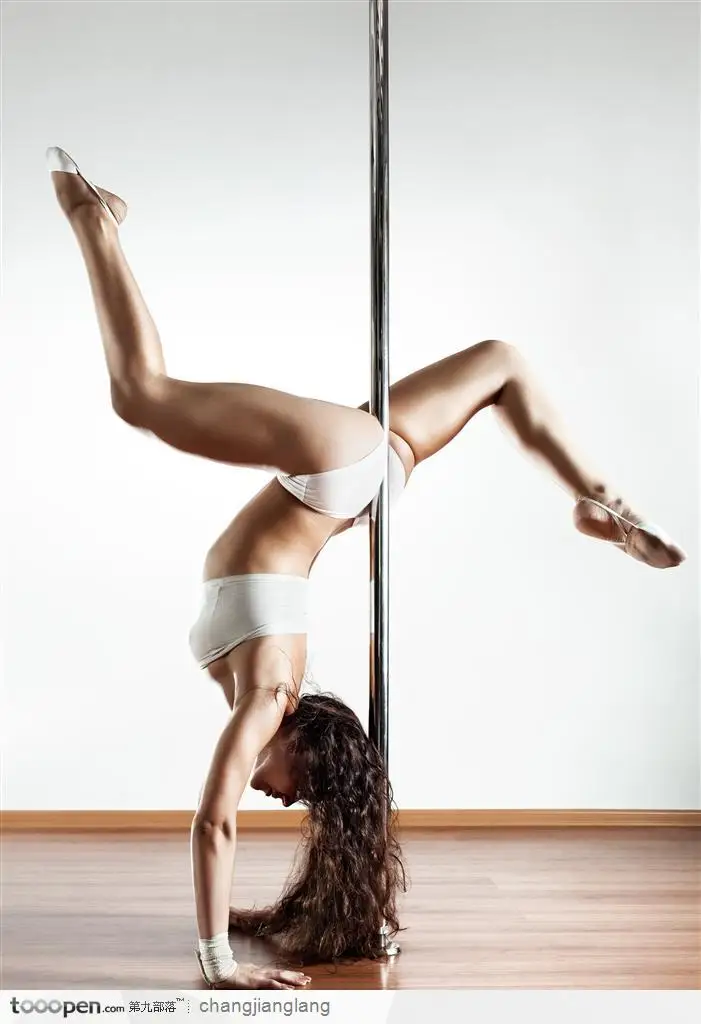
- All directions of half-dance are intertwined with each other. You can't dance without tricks or choreography.
- One session actually replaces a circuit training, where exercises for different muscle groups are repeated several times - the same number of calories can be spent. In addition, classes on the pole train the skill of controlling the whole body.
- You can practice from scratch without any preparation. Usually, students are divided into groups of beginners and those who have been studying for a long time.
- At the beginning of each workout, a mandatory warm-up, and after it - stretching or exercises without a pole.
- To start doing semi-sports, you only need a uniform, and for exotic you also need special shoes and knee pads.
- Training is contraindicated for people with severe chronic diseases and pregnant women.
- Pole dance is classified as a traumatic sport, so it is important to follow the safety precautions that you should be introduced to in the studio.
